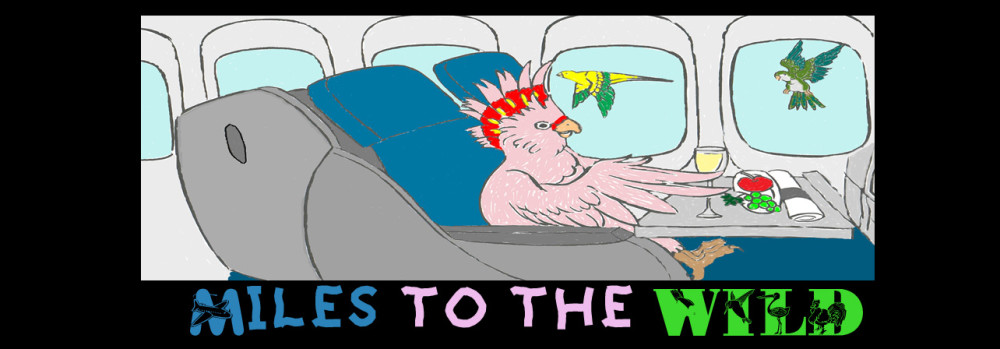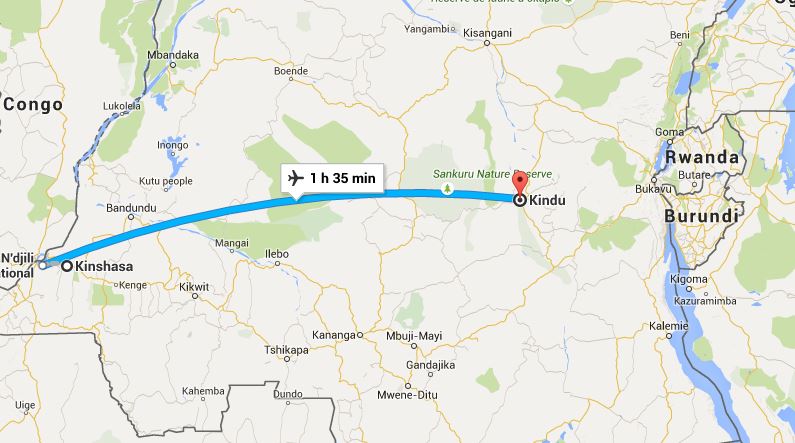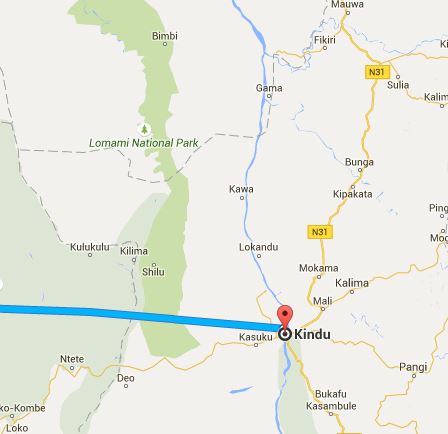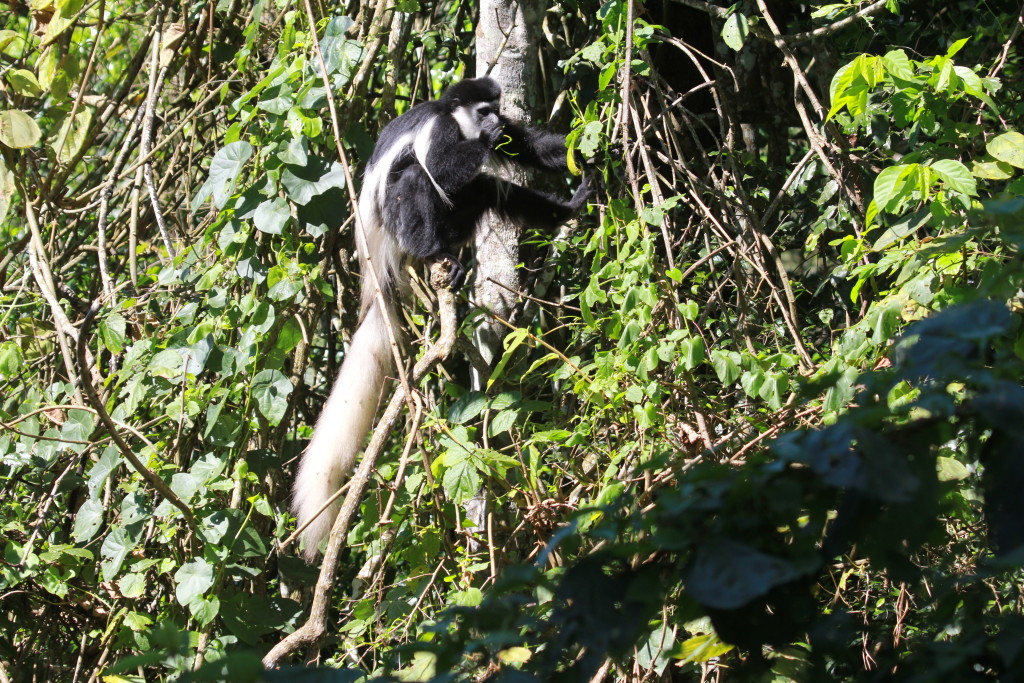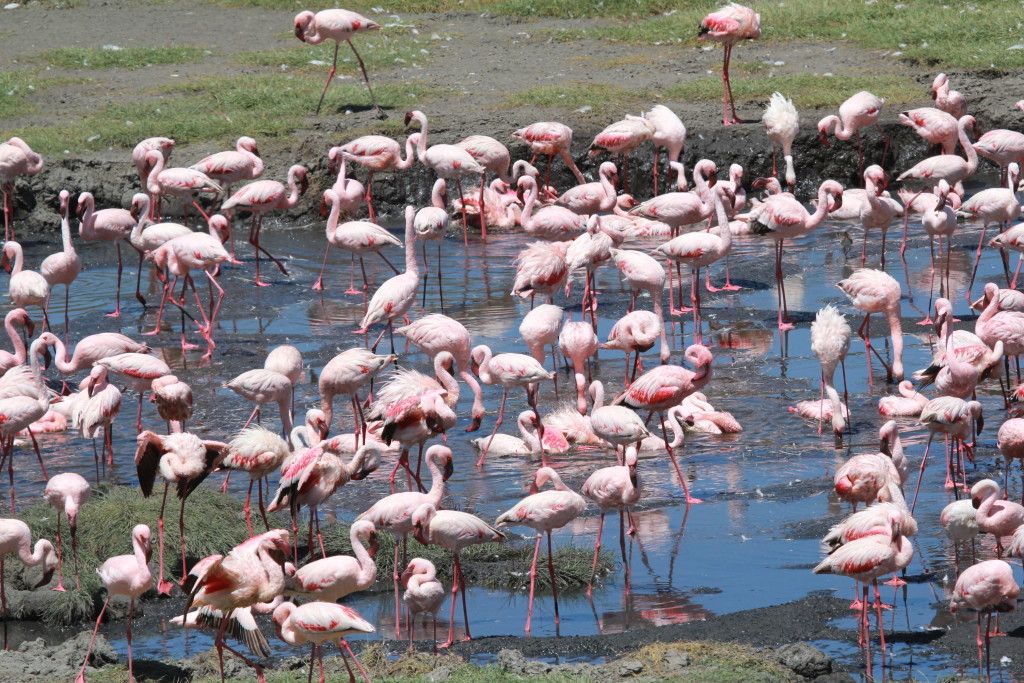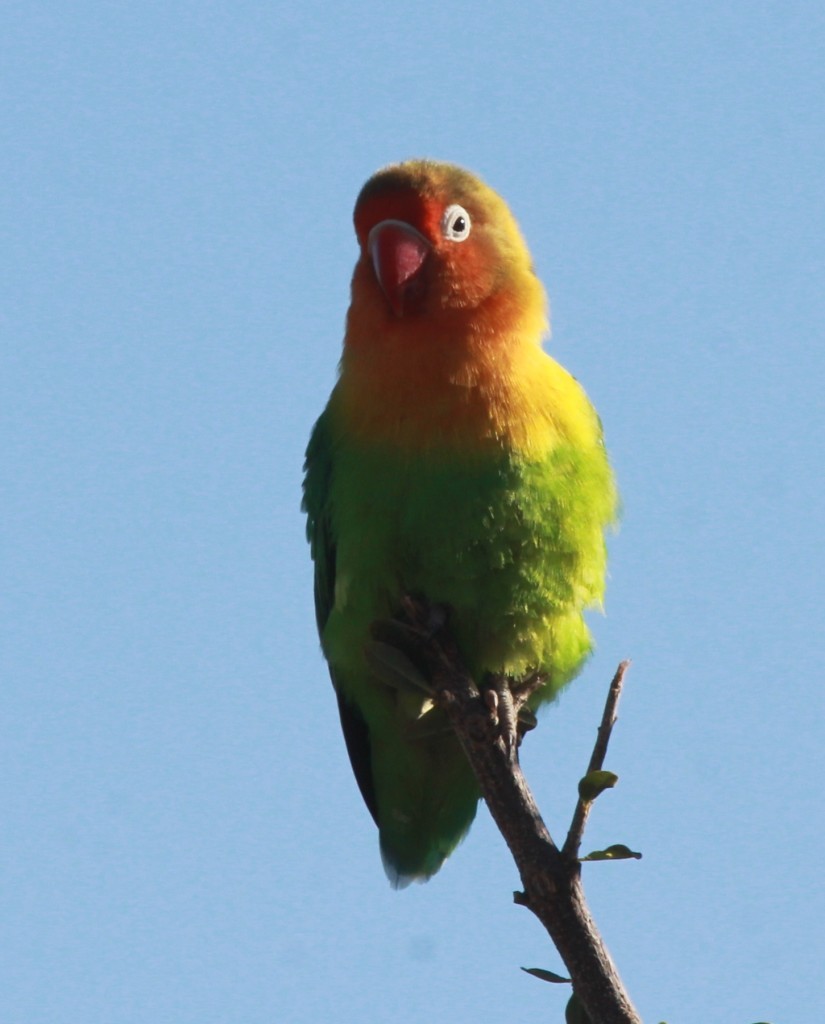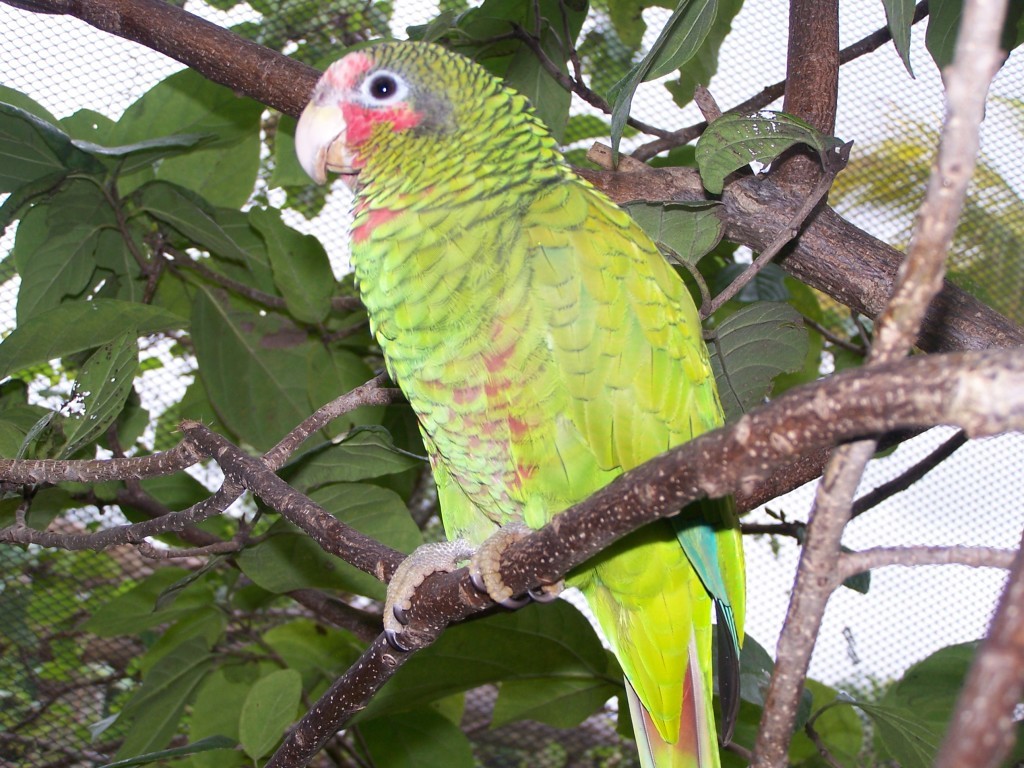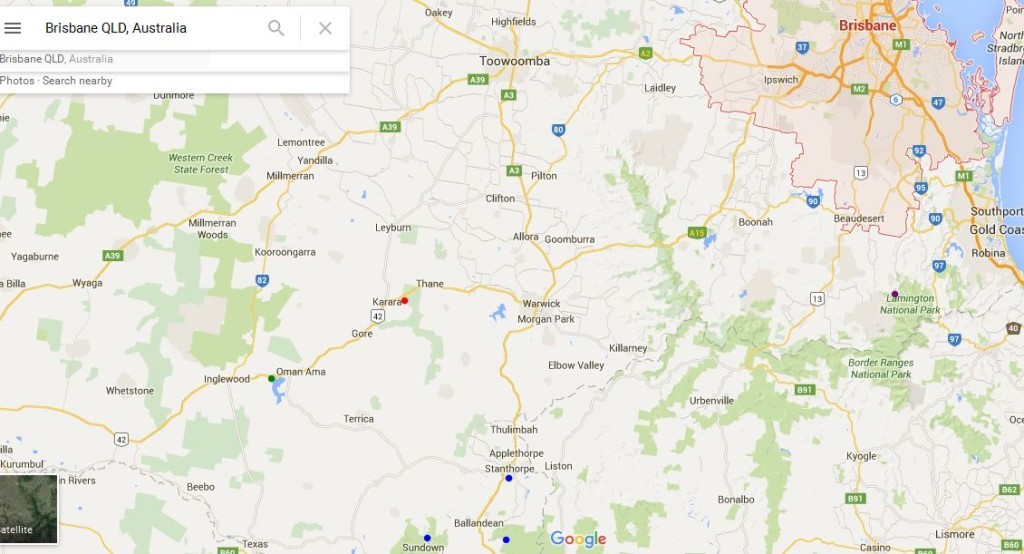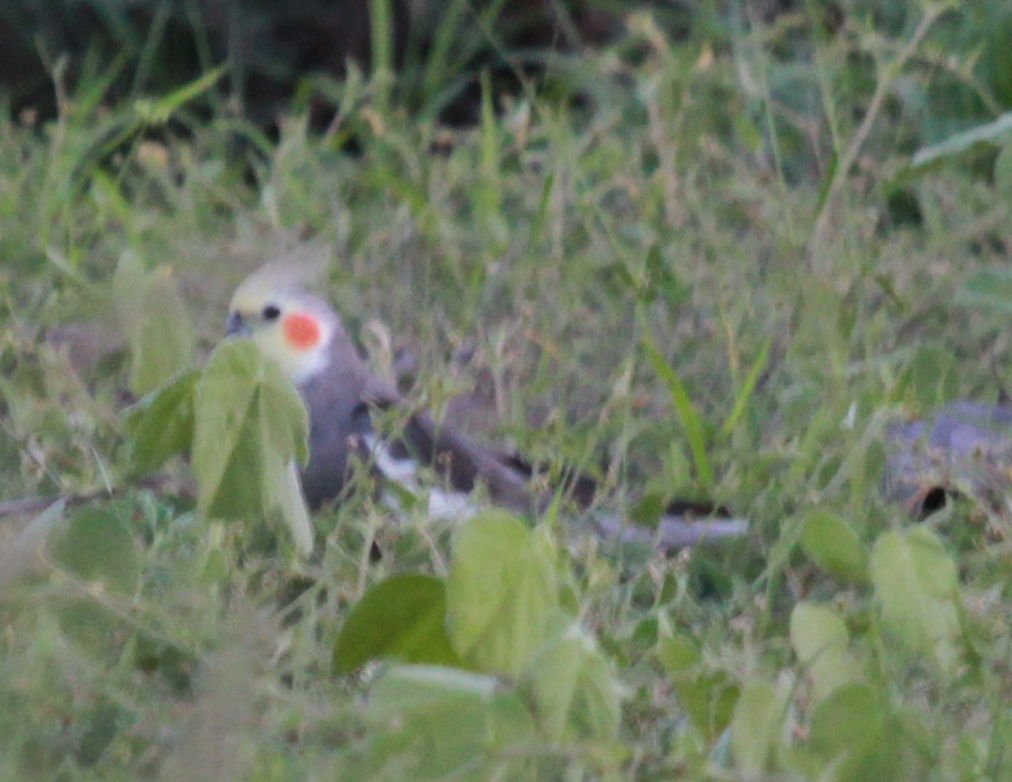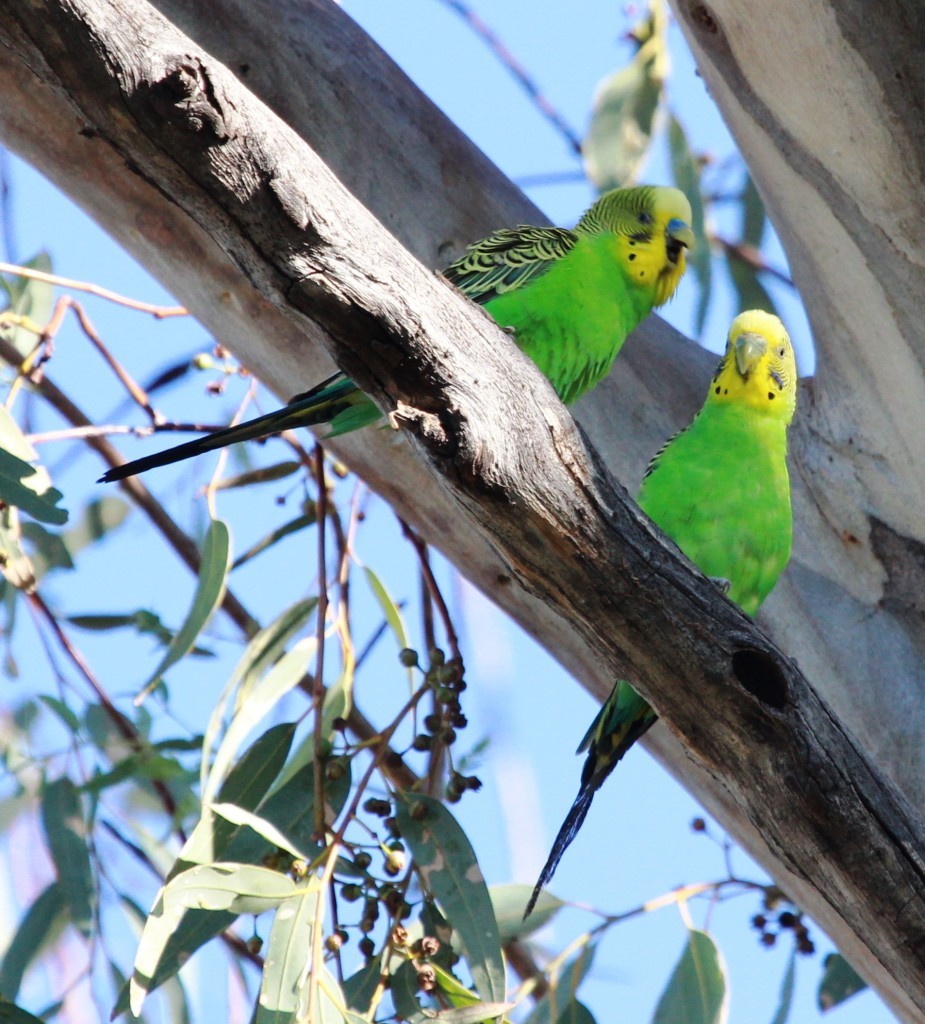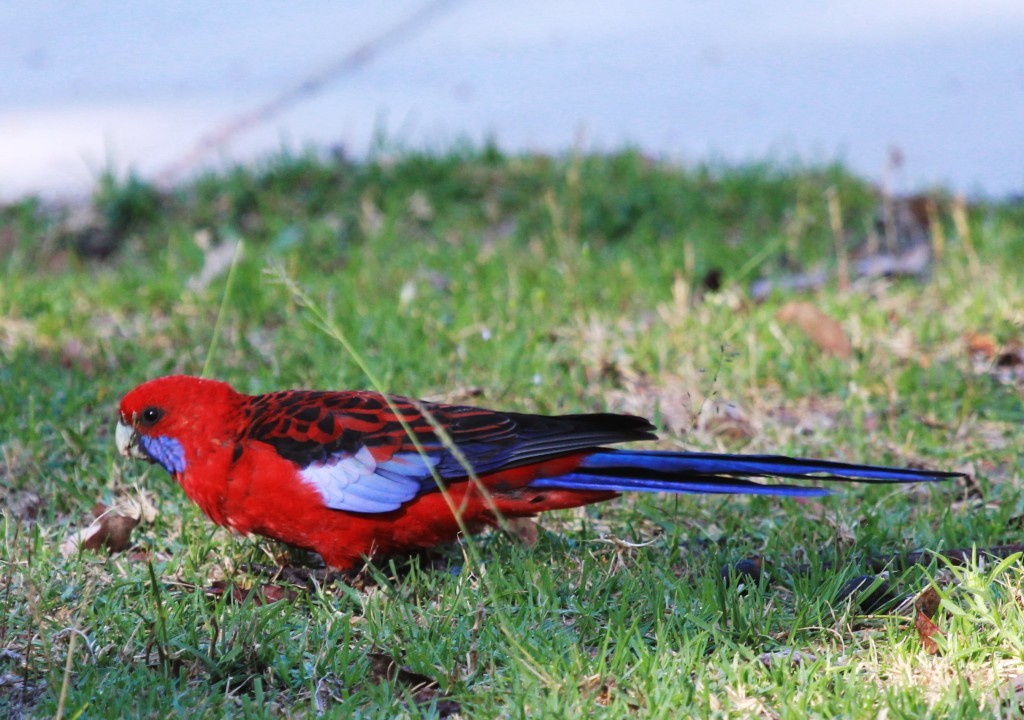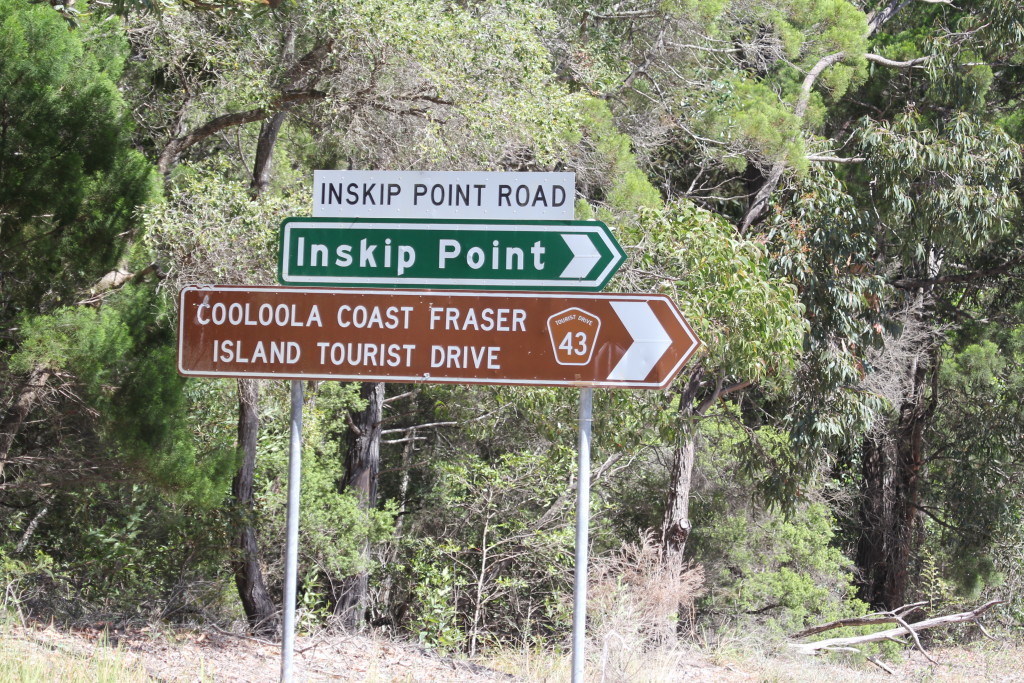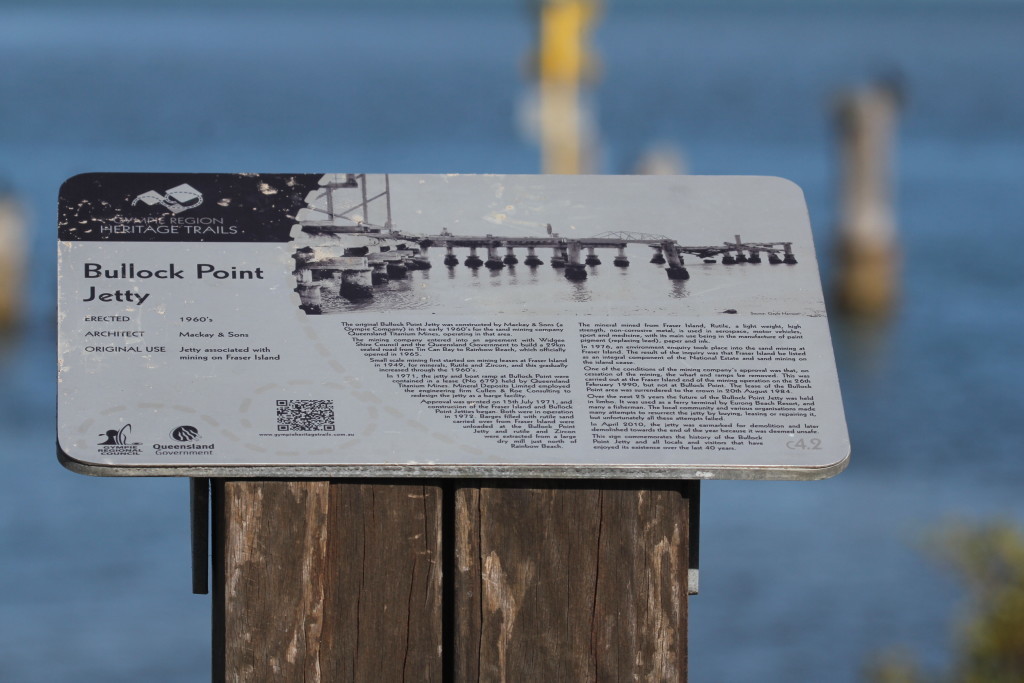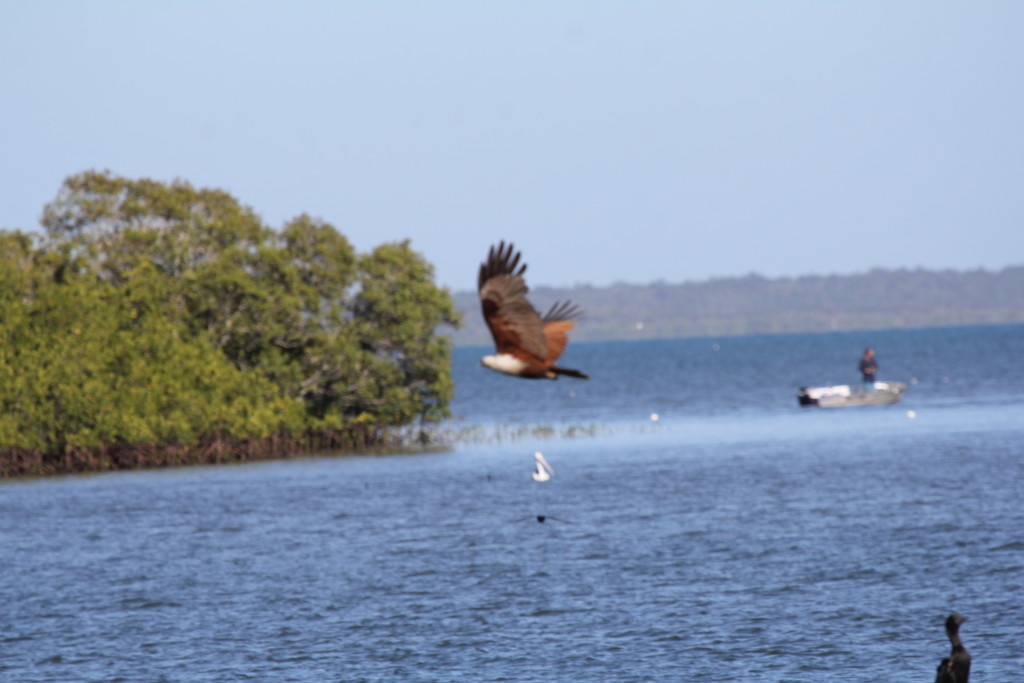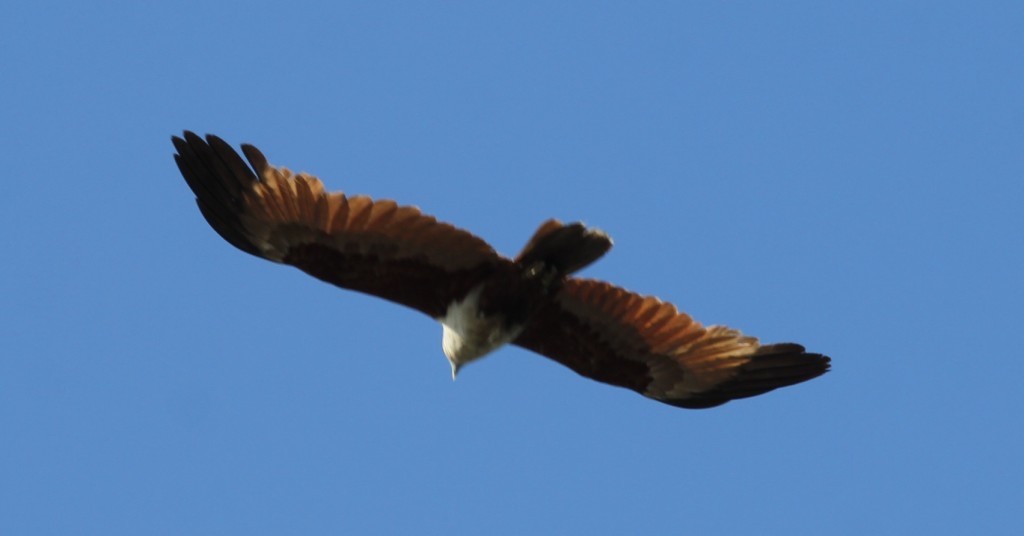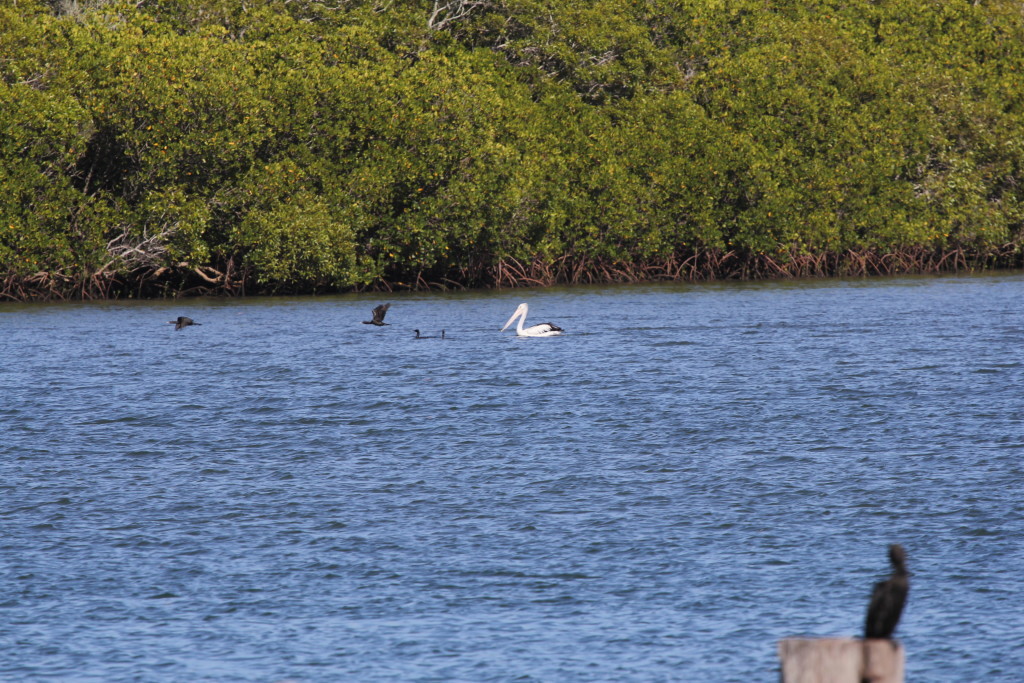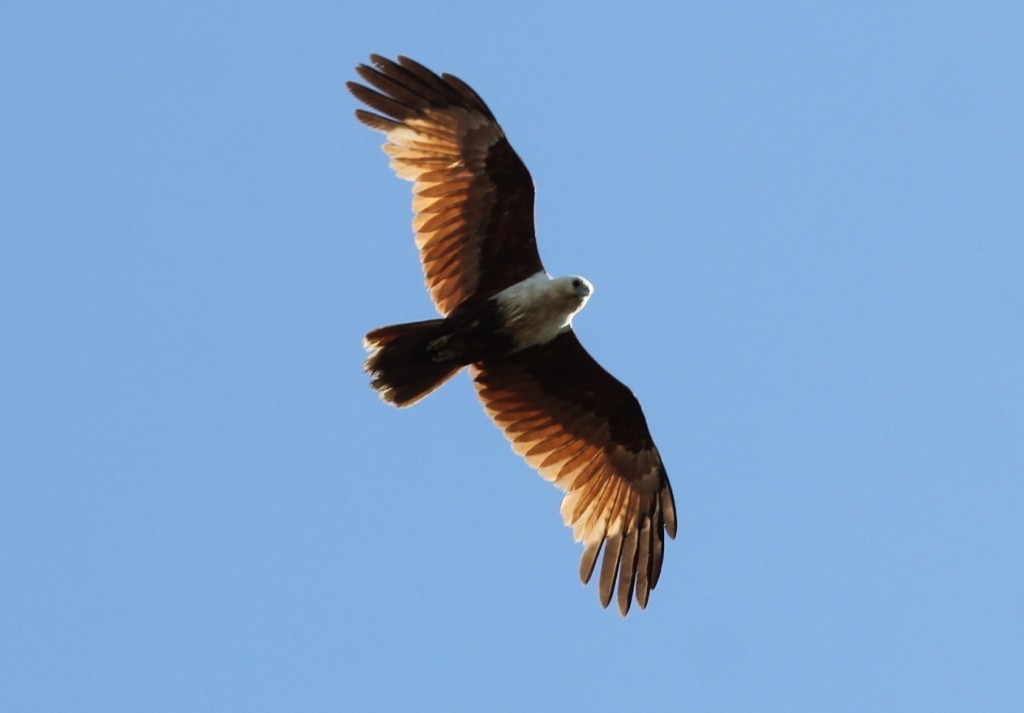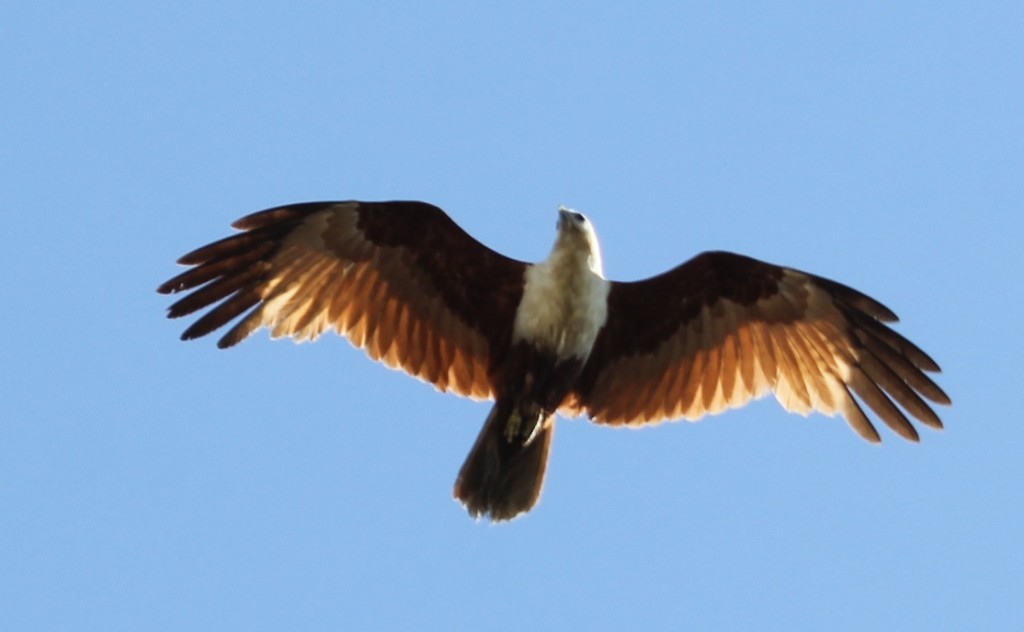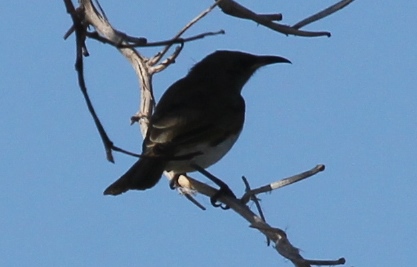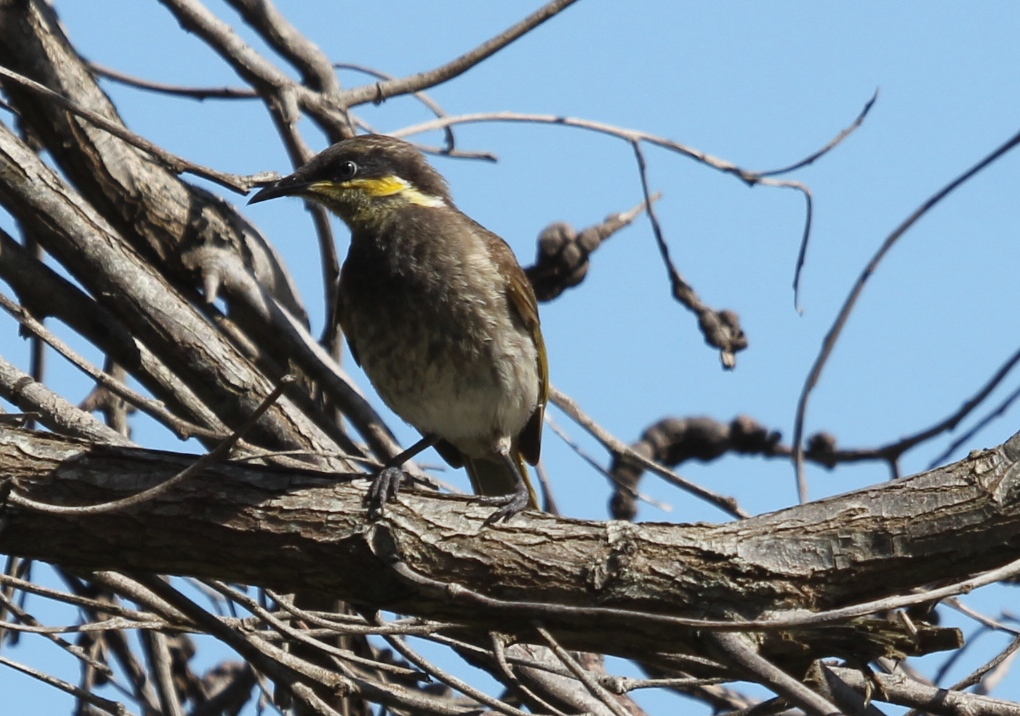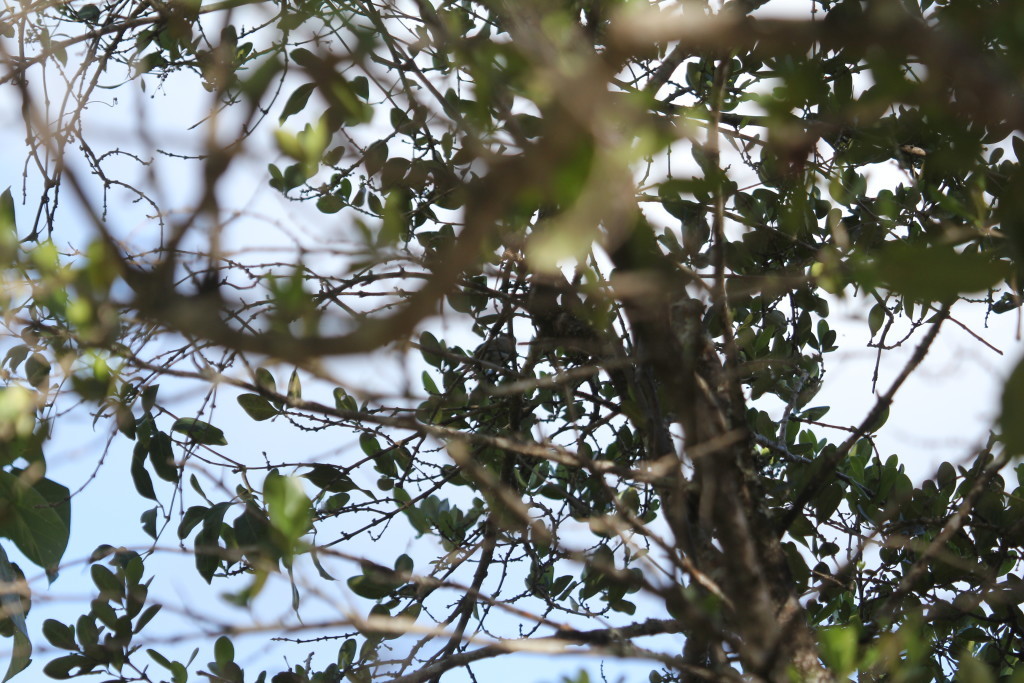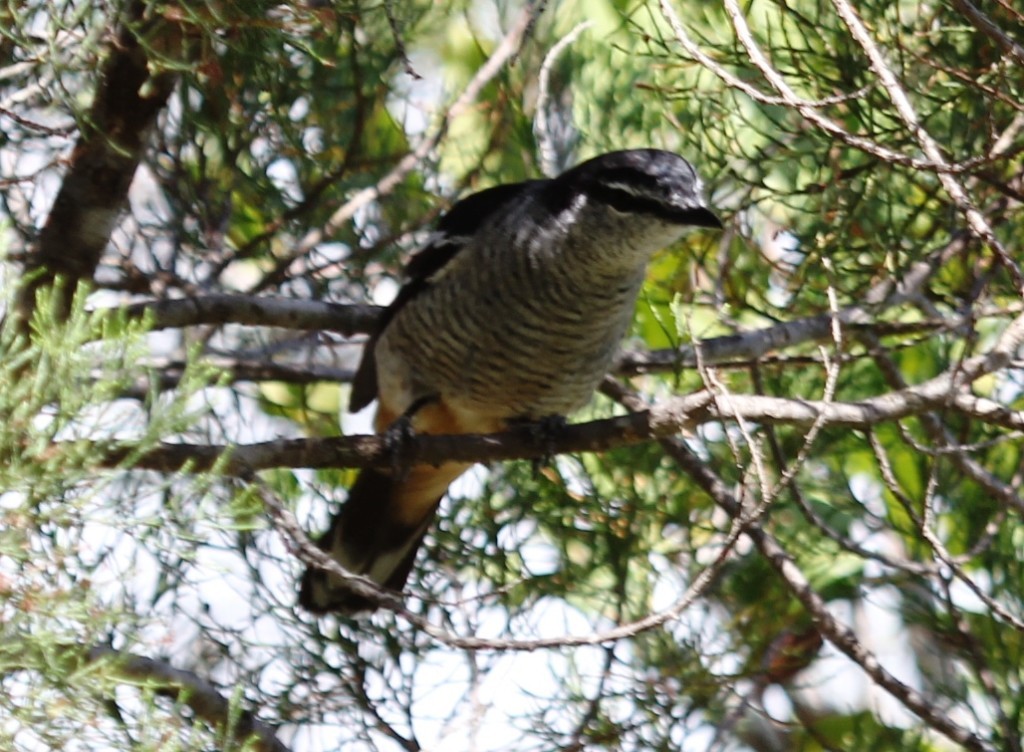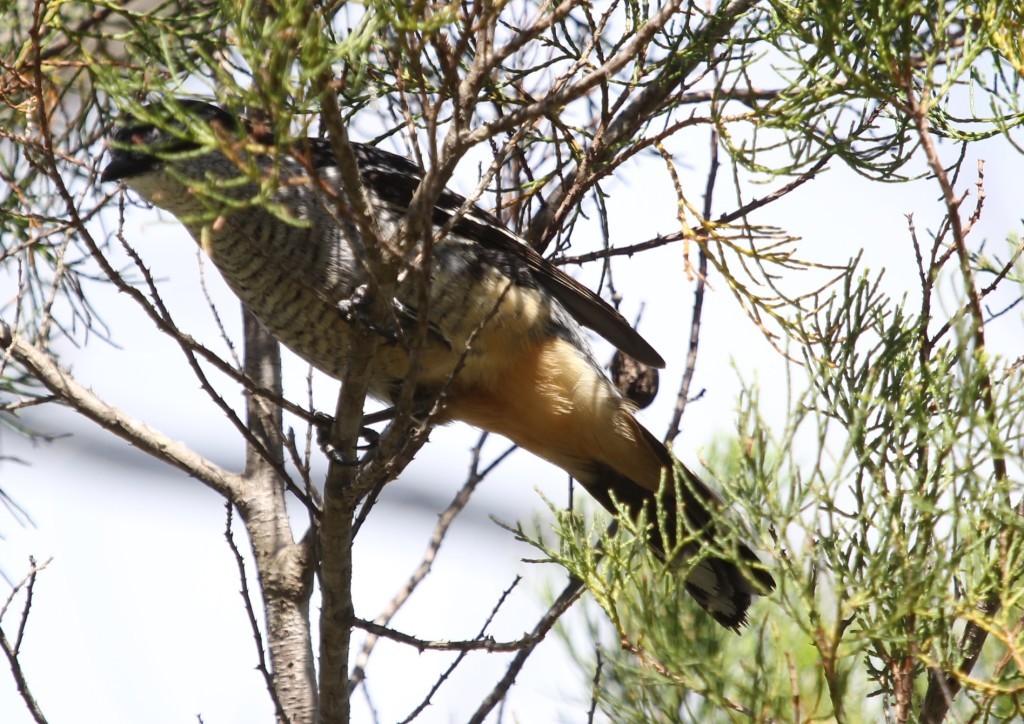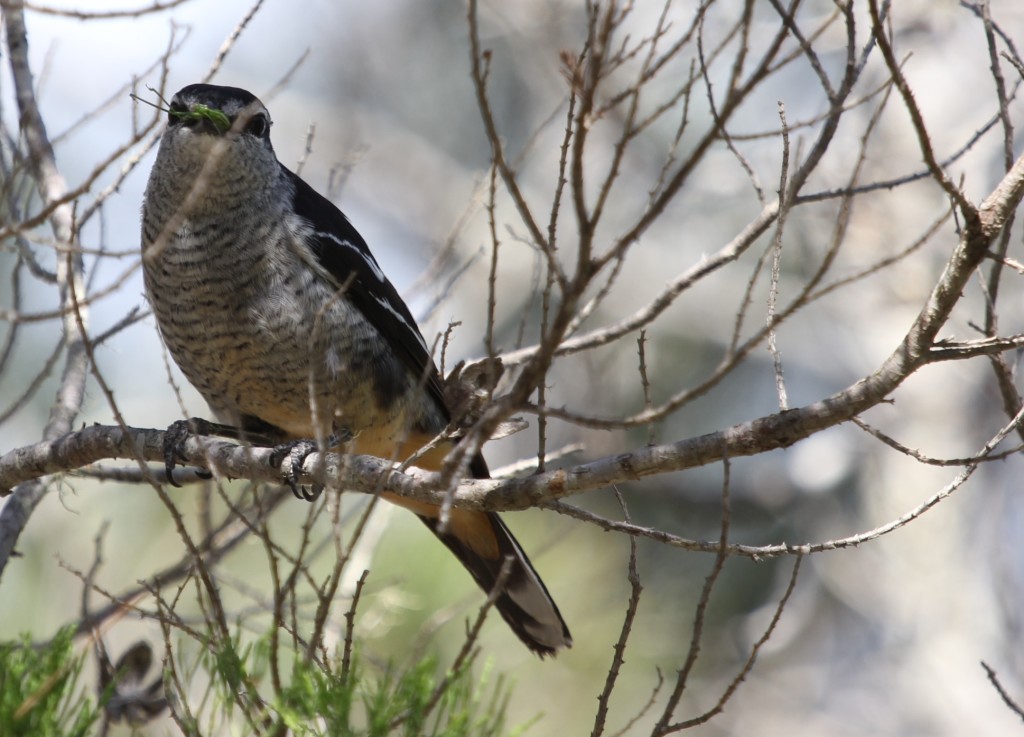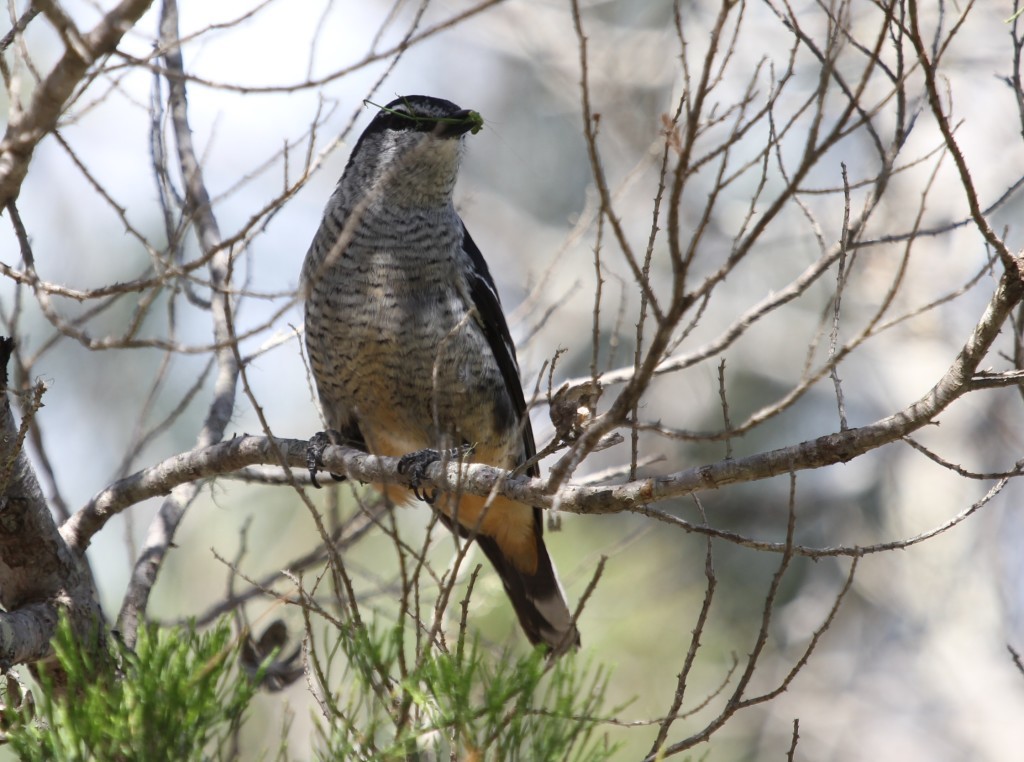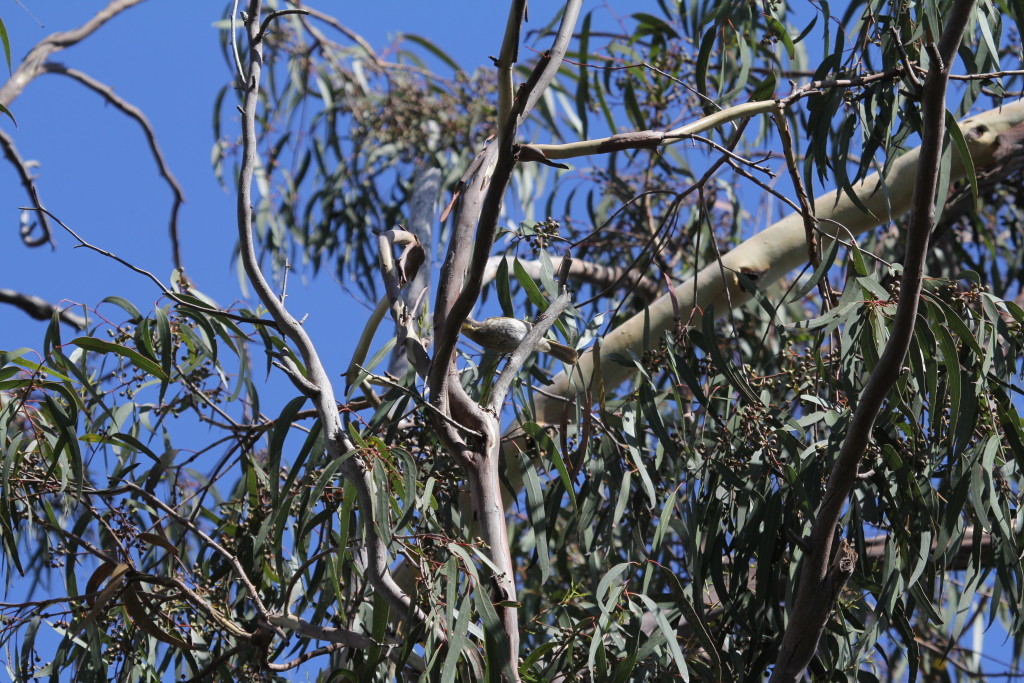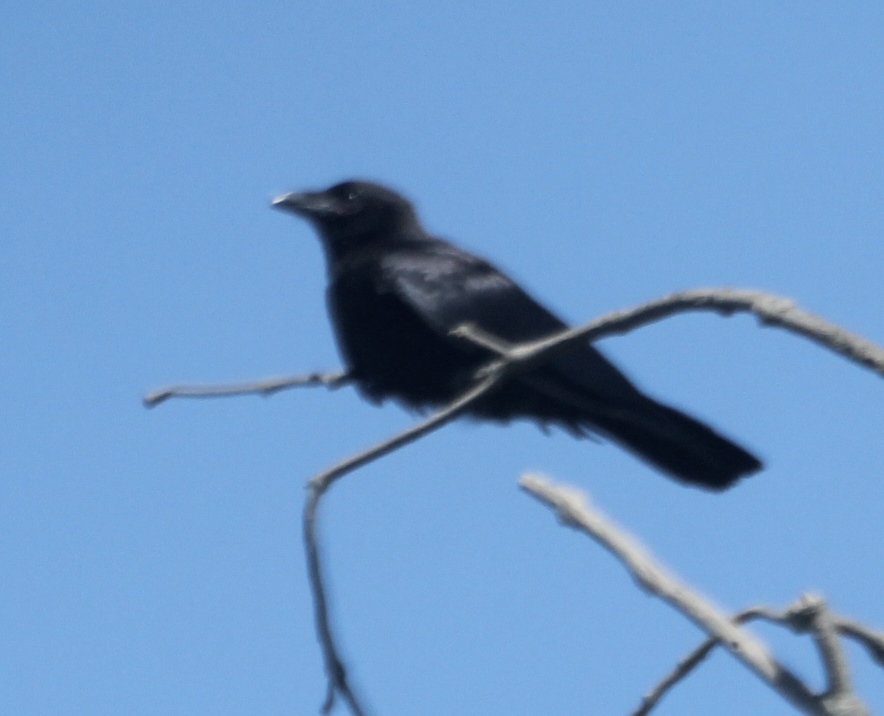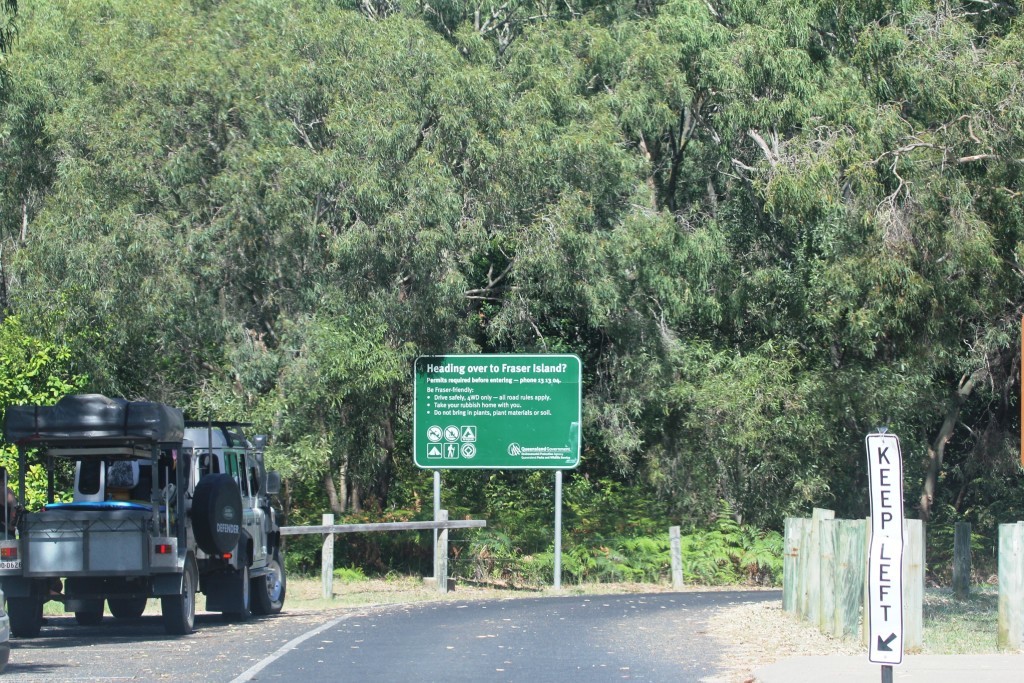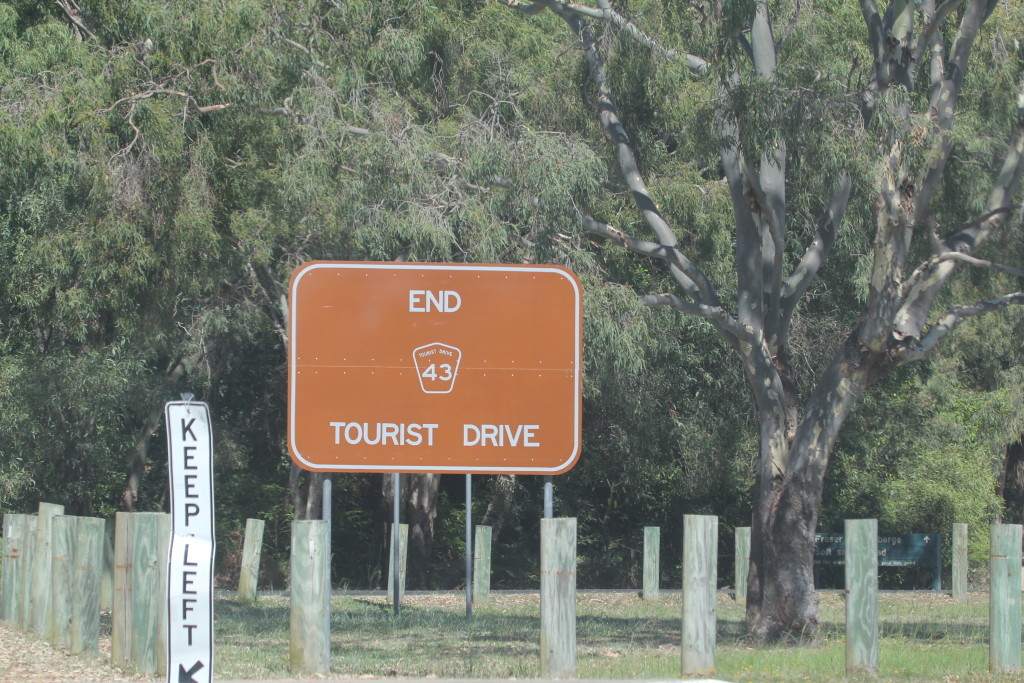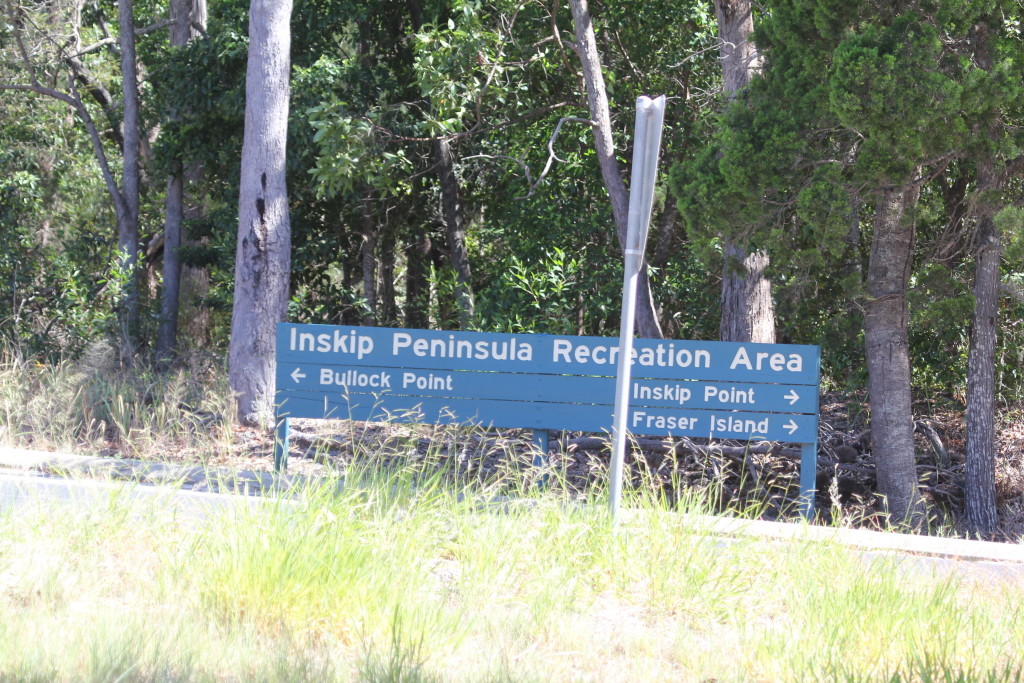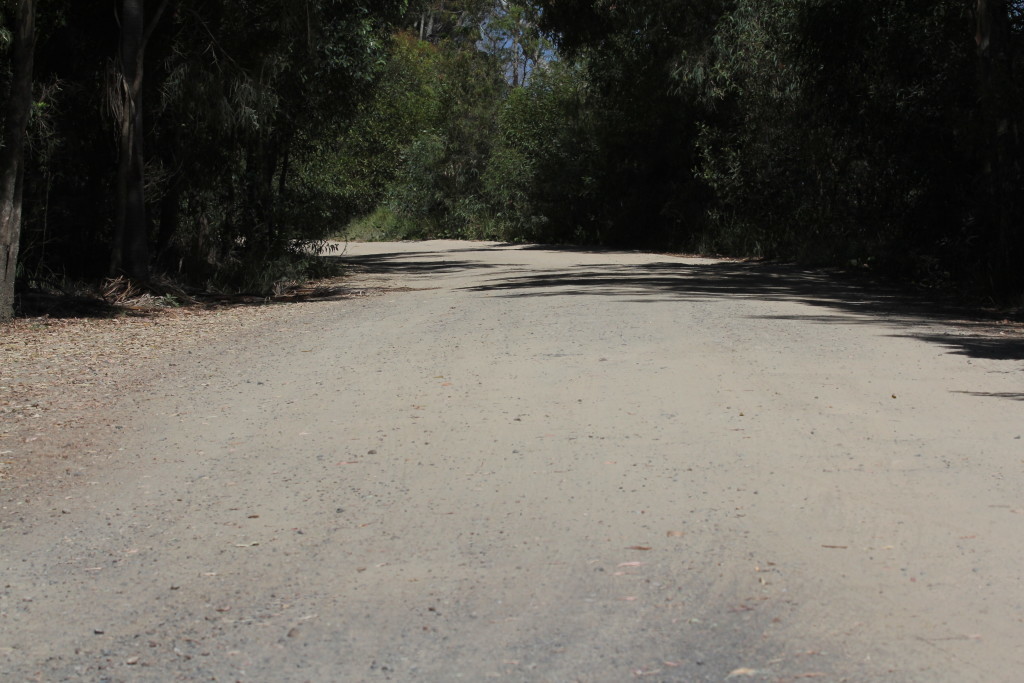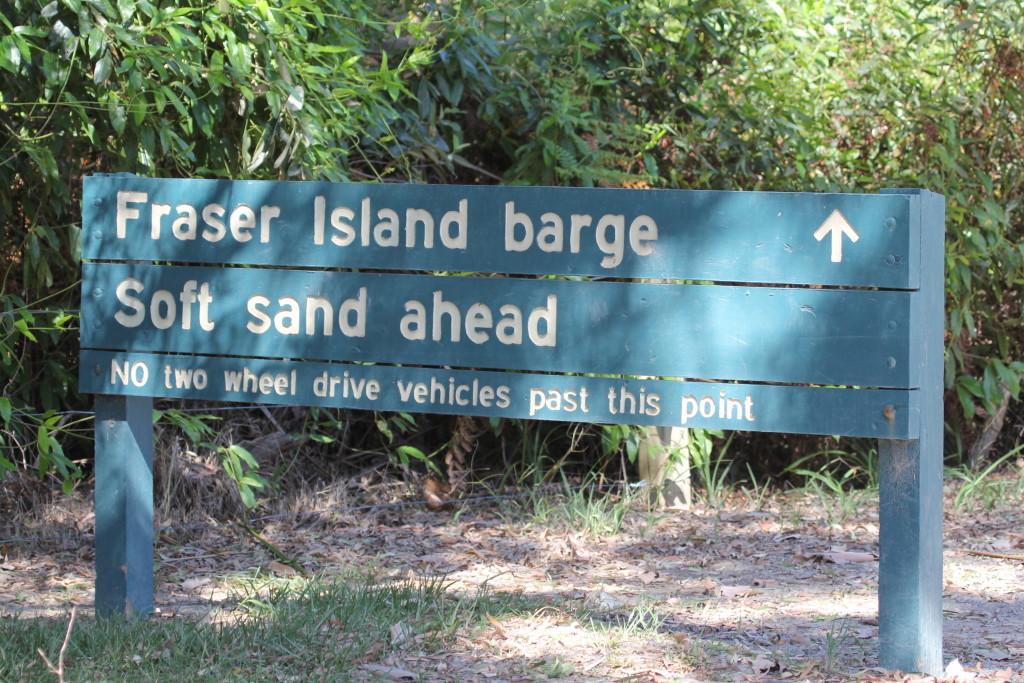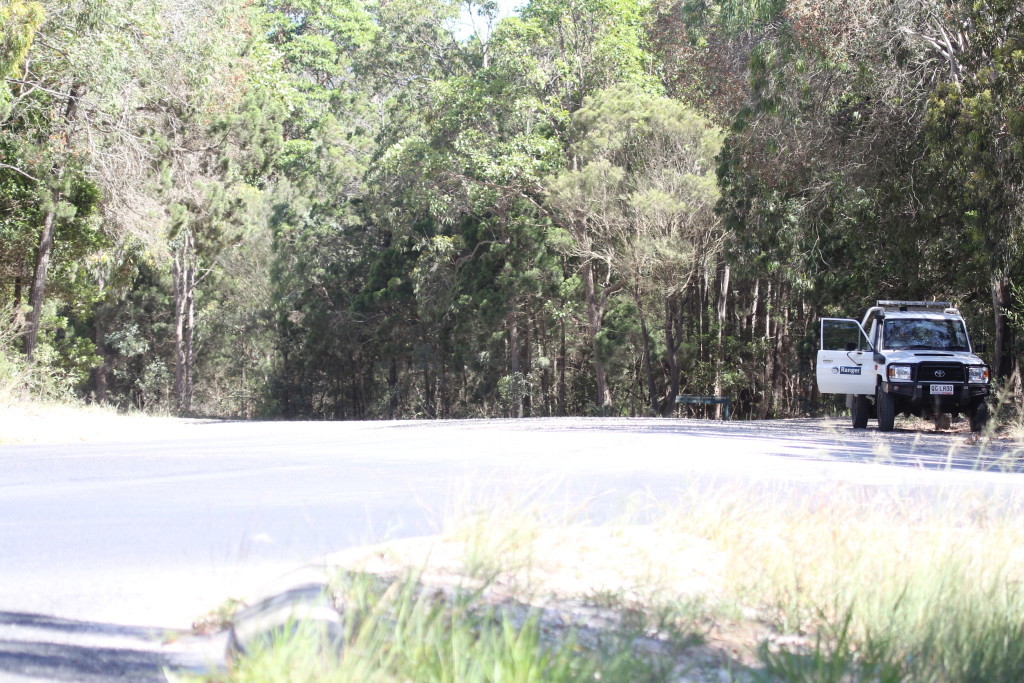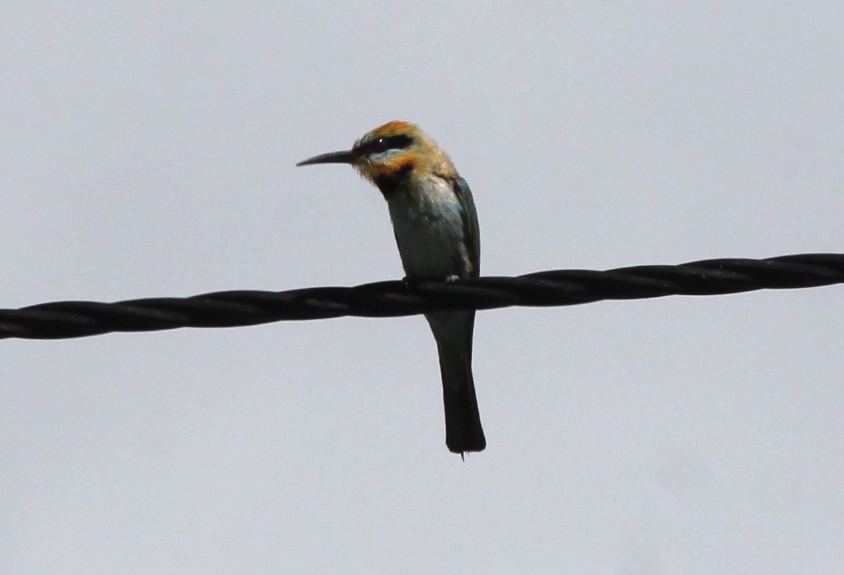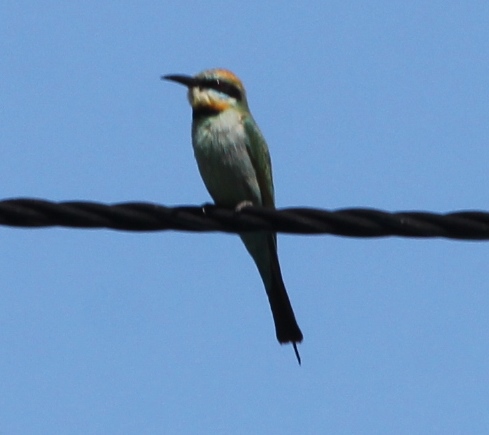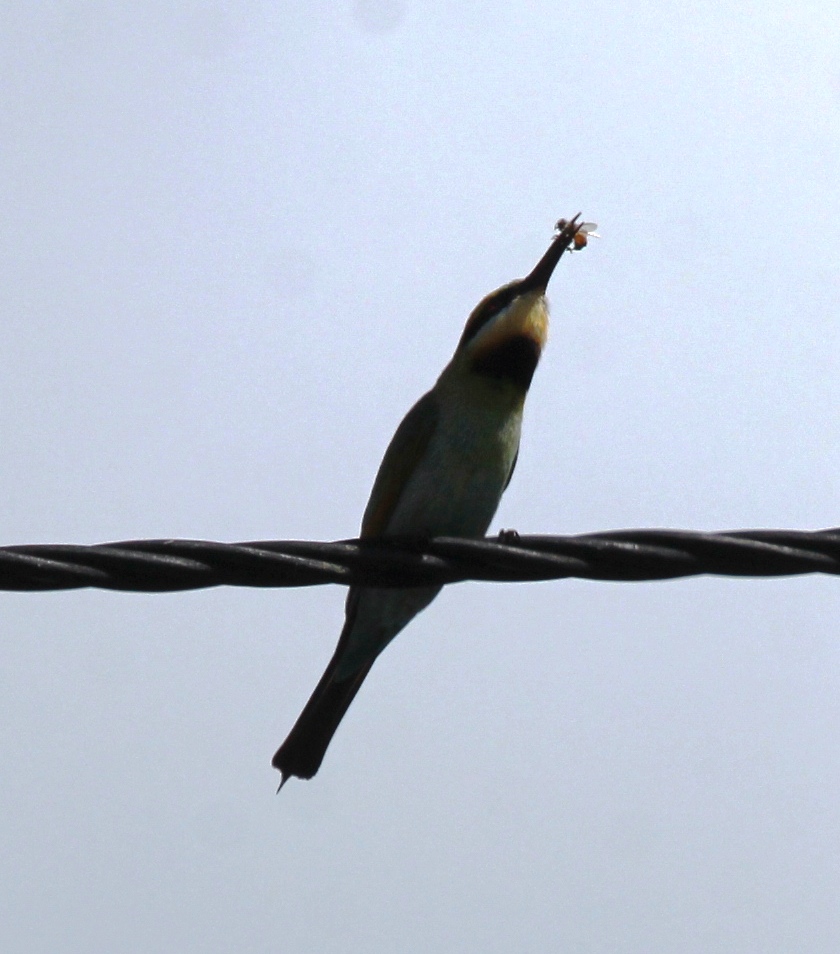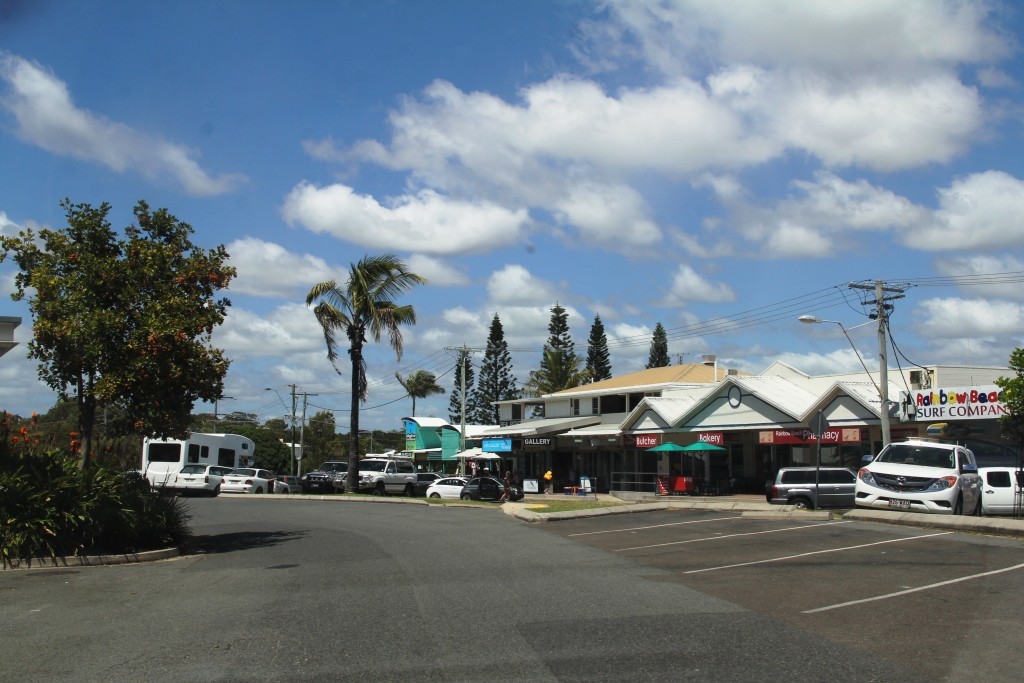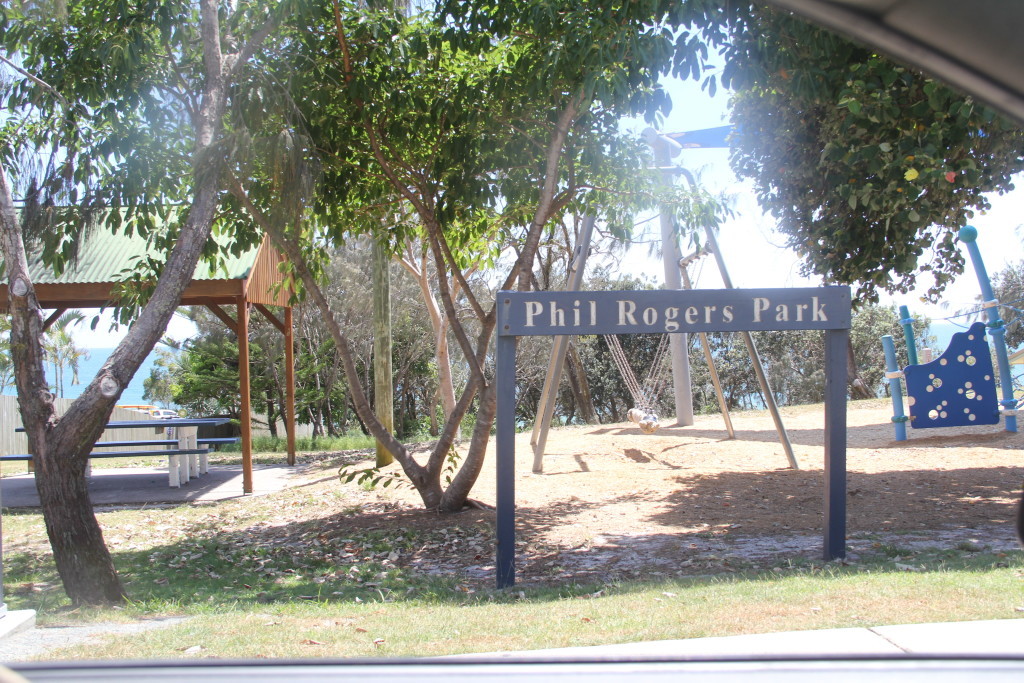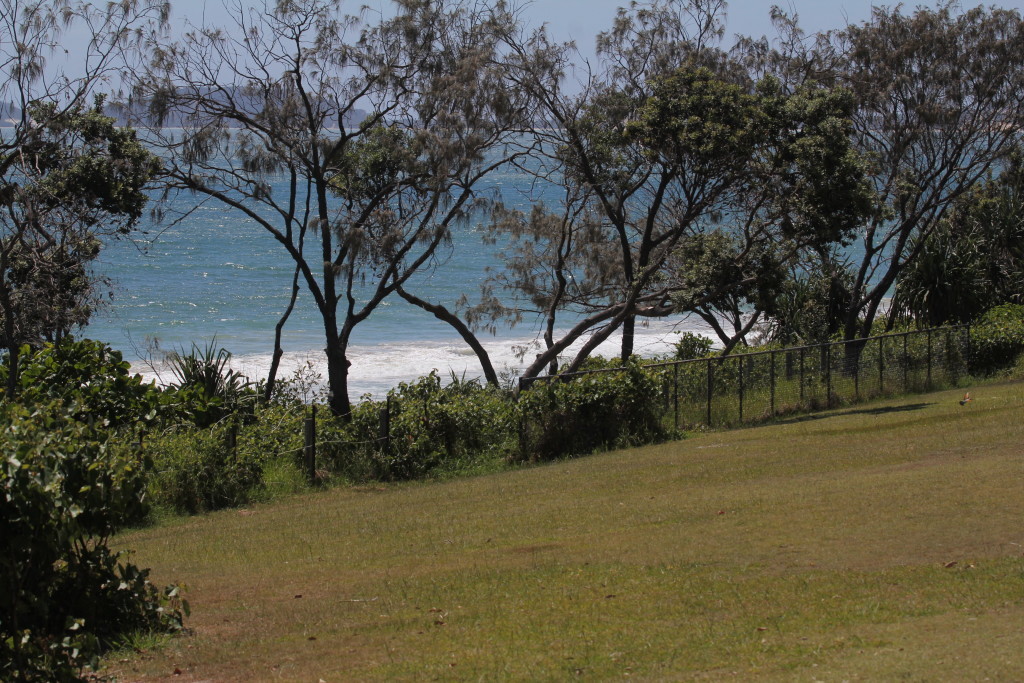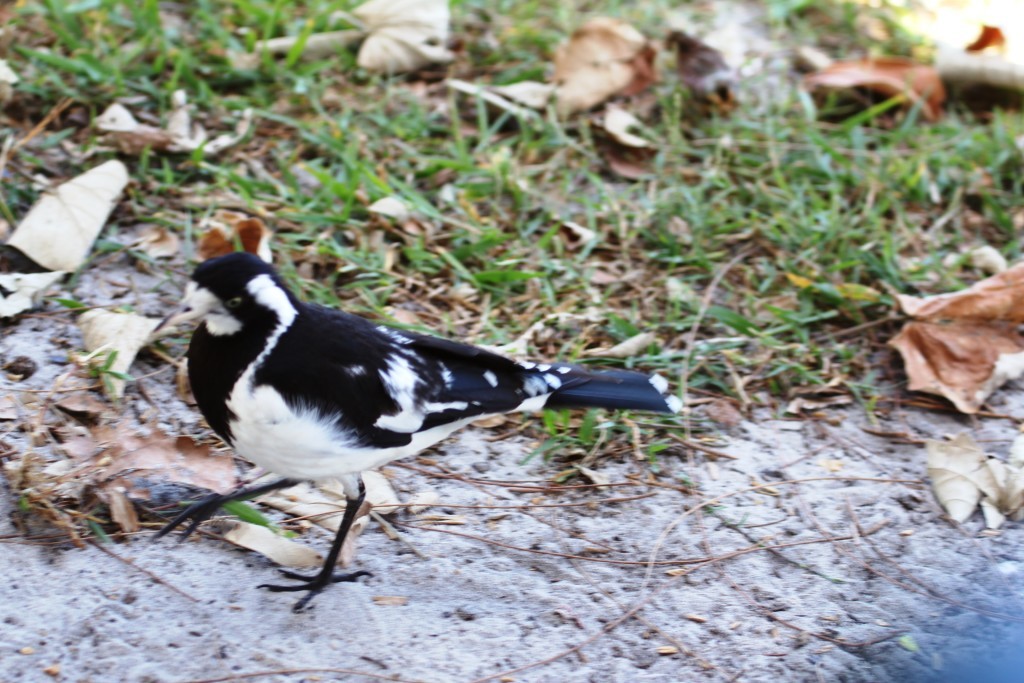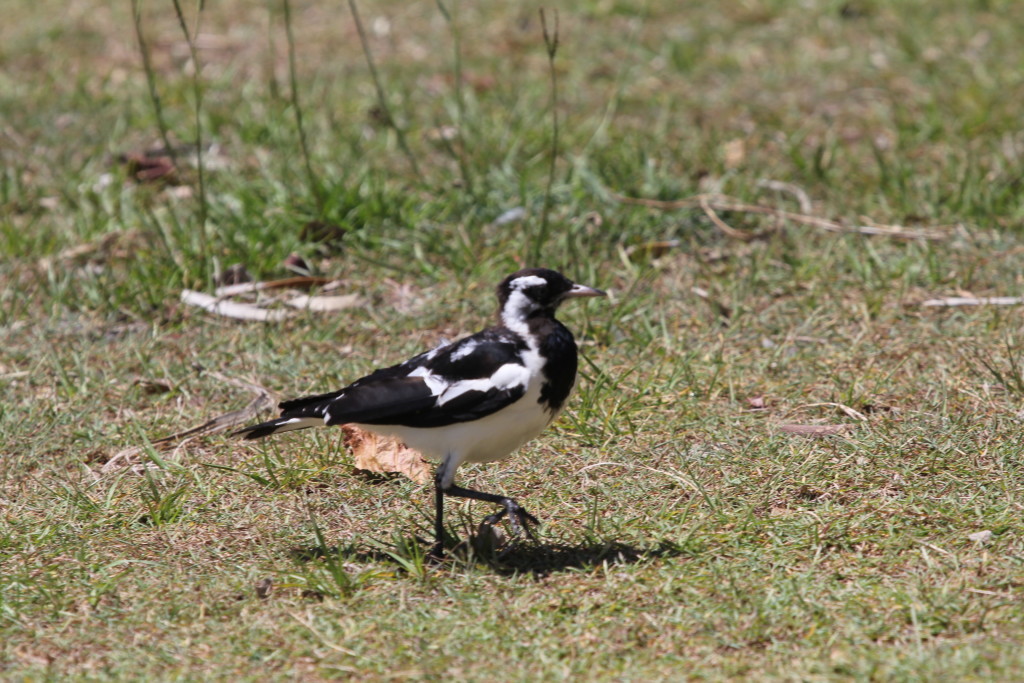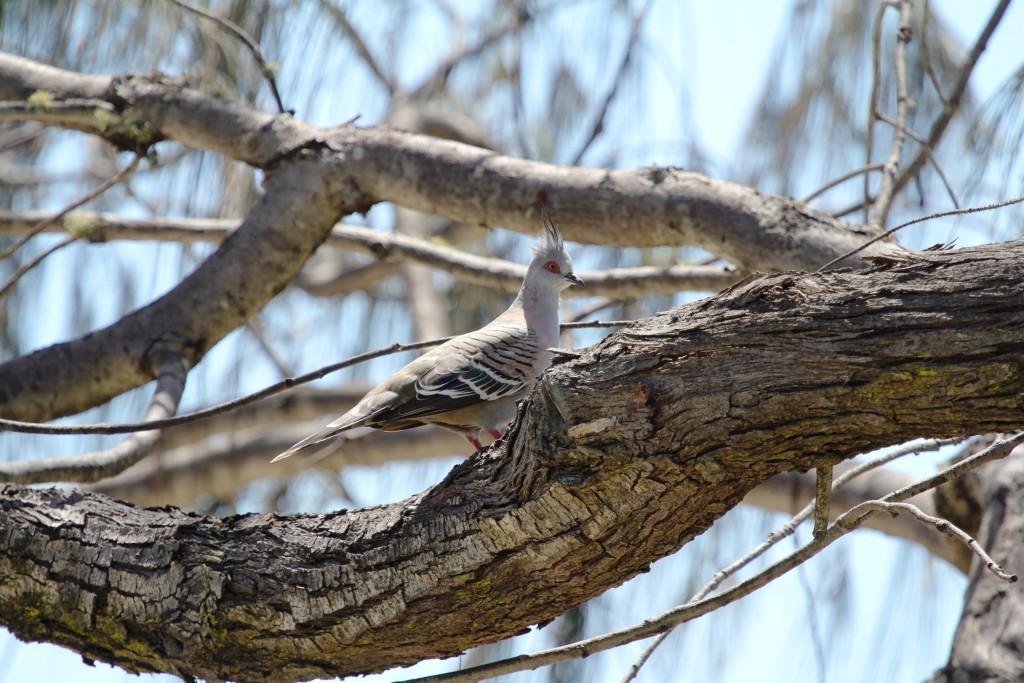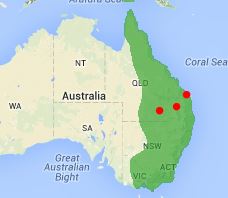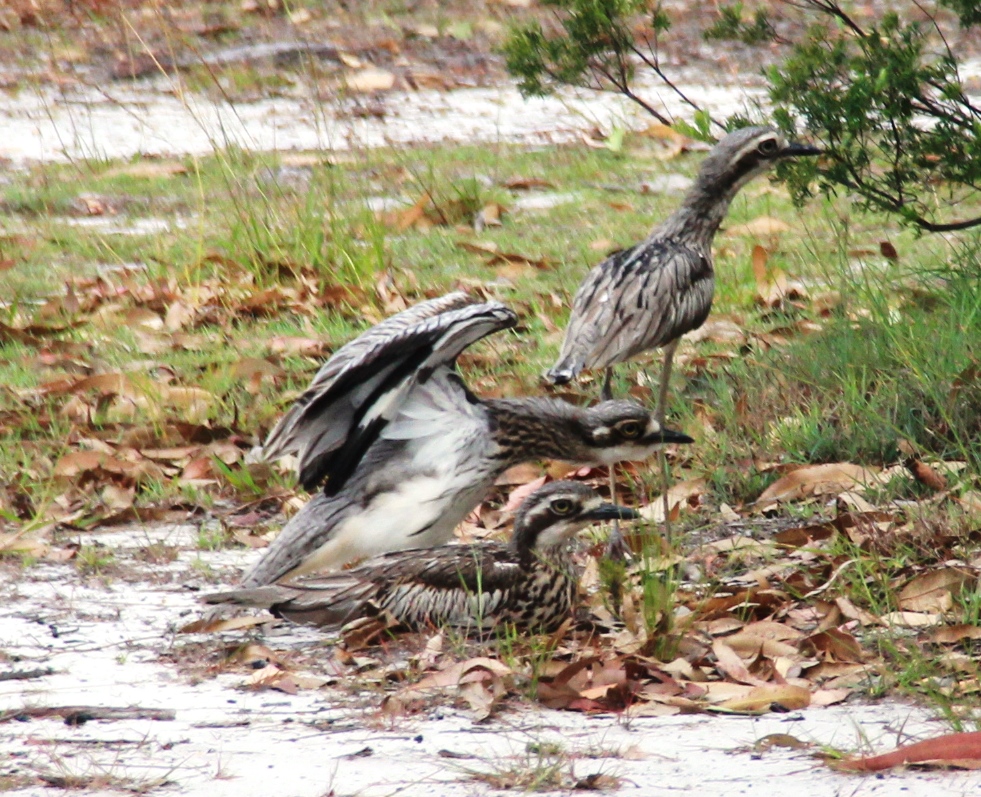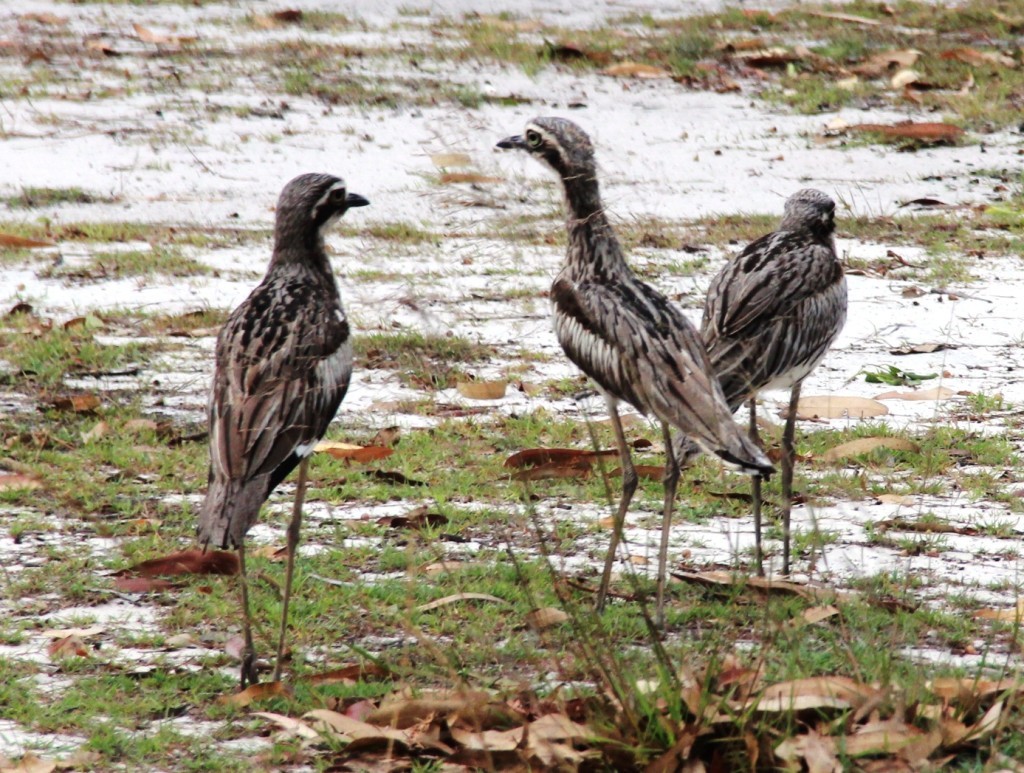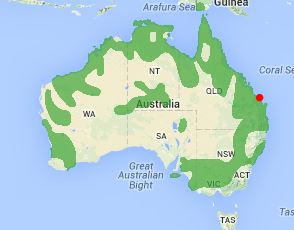Some readers may remember our adventures in Strahan & Melaleuca, Tasmania where I was able to flush a couple of Eastern Ground Parrots. This time, we were trying to at least hear their dusk chorus and see them if we were lucky. Ground Parrots will flush if you walk close to them so usually they have to be pretty close to the road. Then it’s just a blur as they fly up and over around 20 meters and back into the bush.
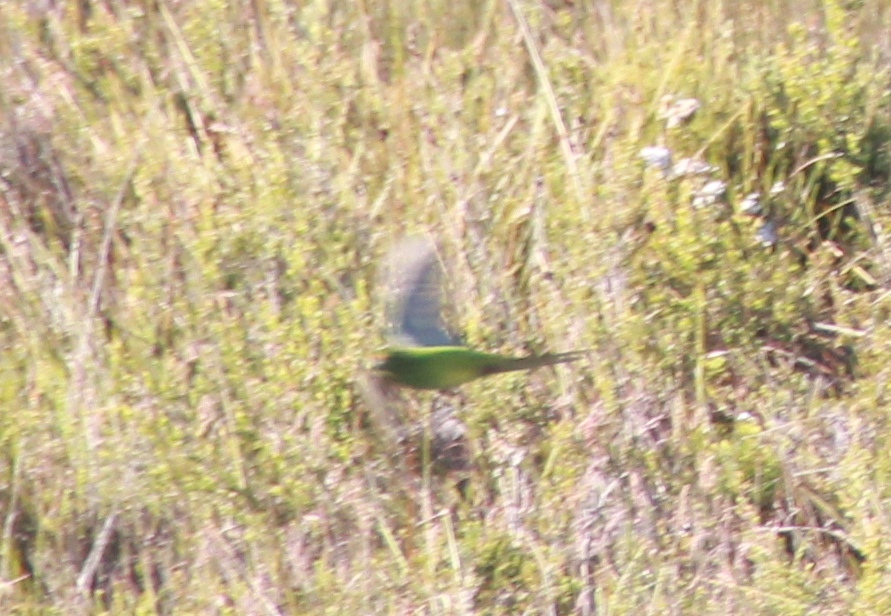
I was eager to try to see their cousins in Queensland so that was my main reason to join the Birds Queensland camp last week. The location of the Eastern Ground Parrots is pretty hard to find if you haven’t been there before. It’s between Rainbow Beach and Tin Can Bay and you have to watch for a little side road about 16 km from Rainbow Beach.
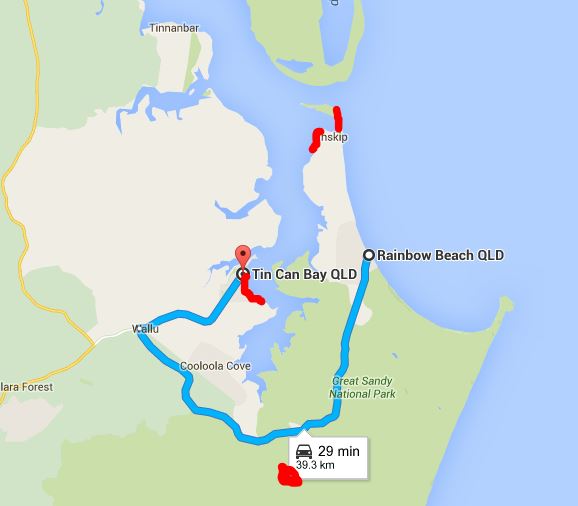 It’s the red blotch below “29 min 39.3 km”.
It’s the red blotch below “29 min 39.3 km”.

I went back the next day to get a shot of the sign while parked on the side road facing Rainbow Beach Road.
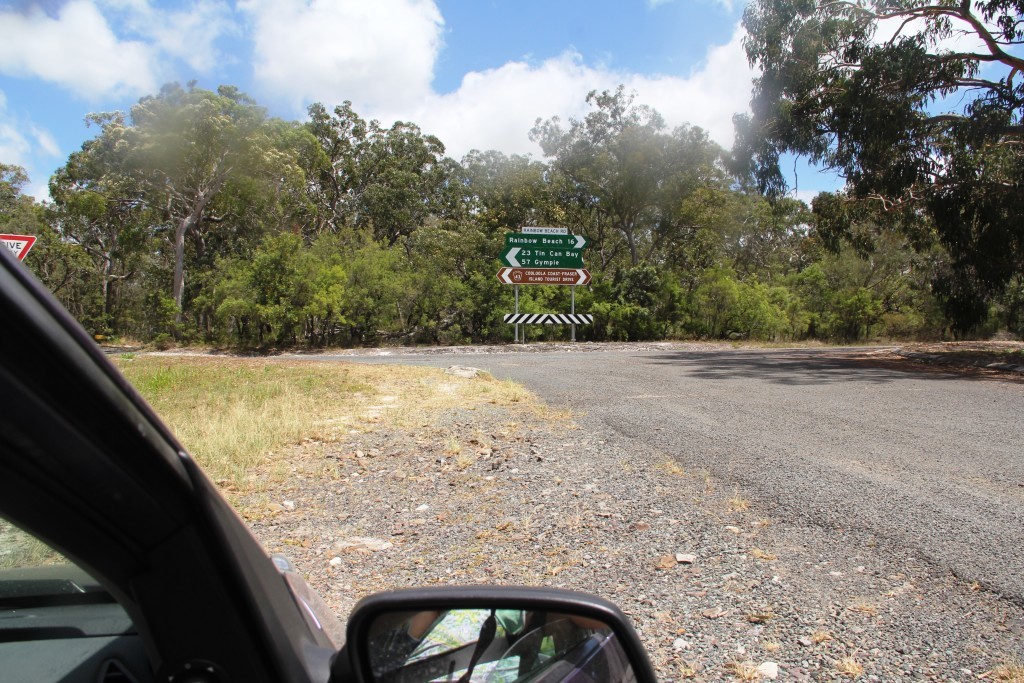
The road looks deceptively good for about 300 metres……………….
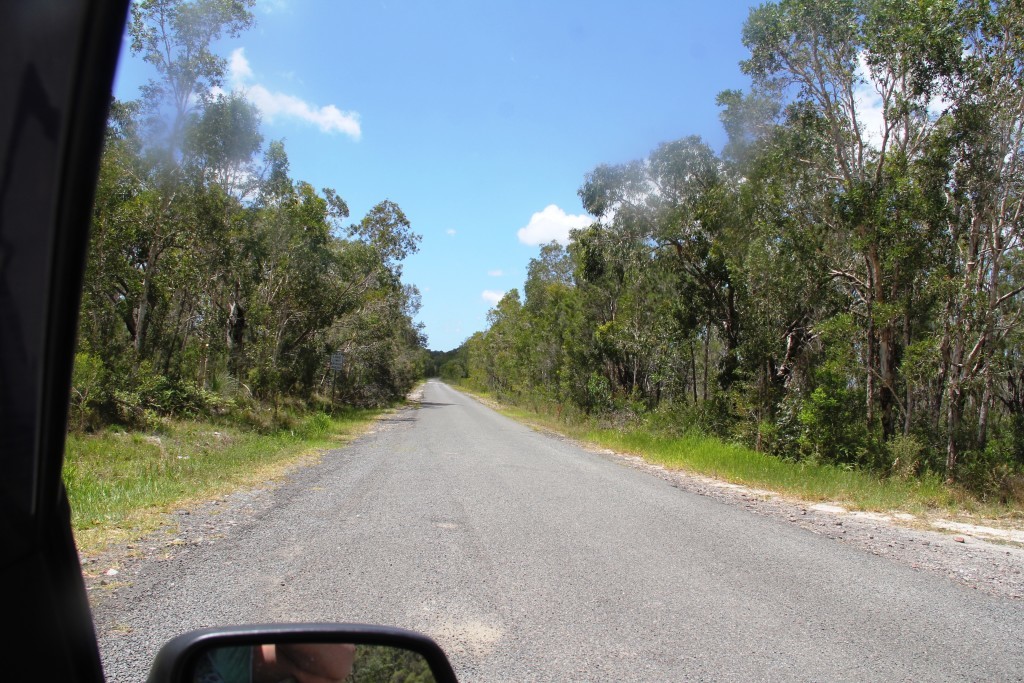
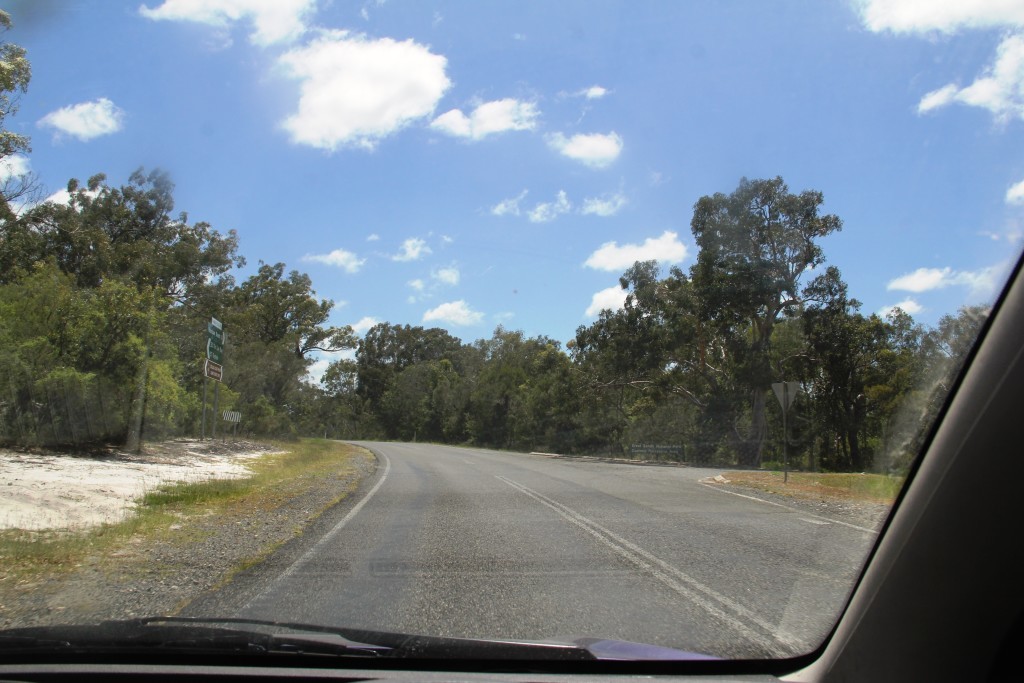
…………….then it all goes to hell! I drive a Ford Fiesta and BARELY made it as did the other small cars in our group. Some people had 4x4s so they had no trouble at all. You need high clearance to avoid scraping the underside of your car. The rocks are large gravel size, going up to softball size.
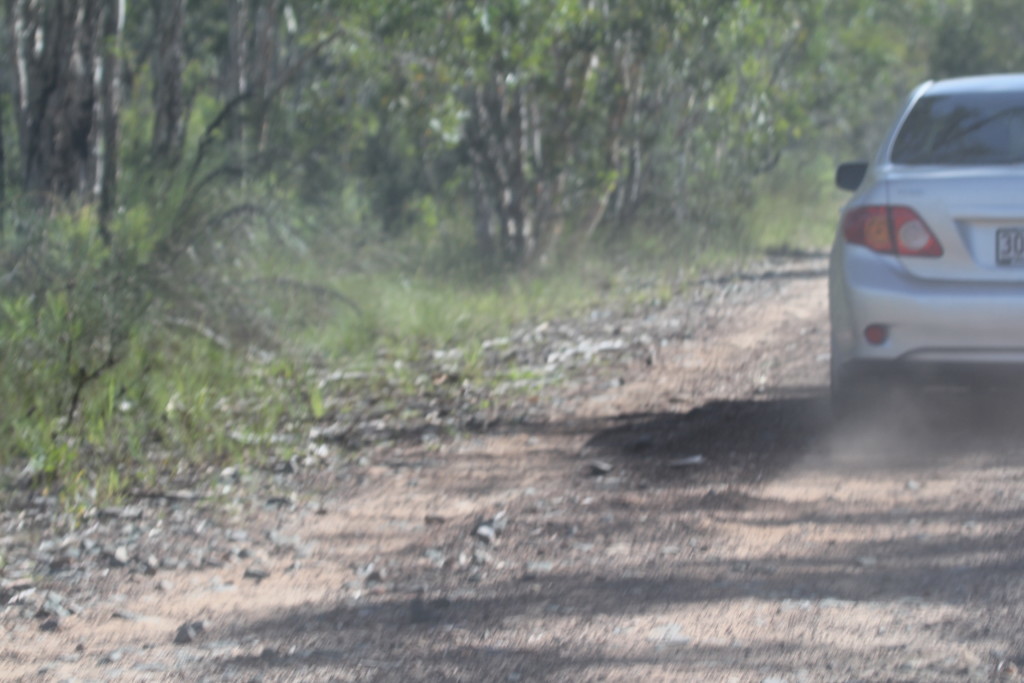
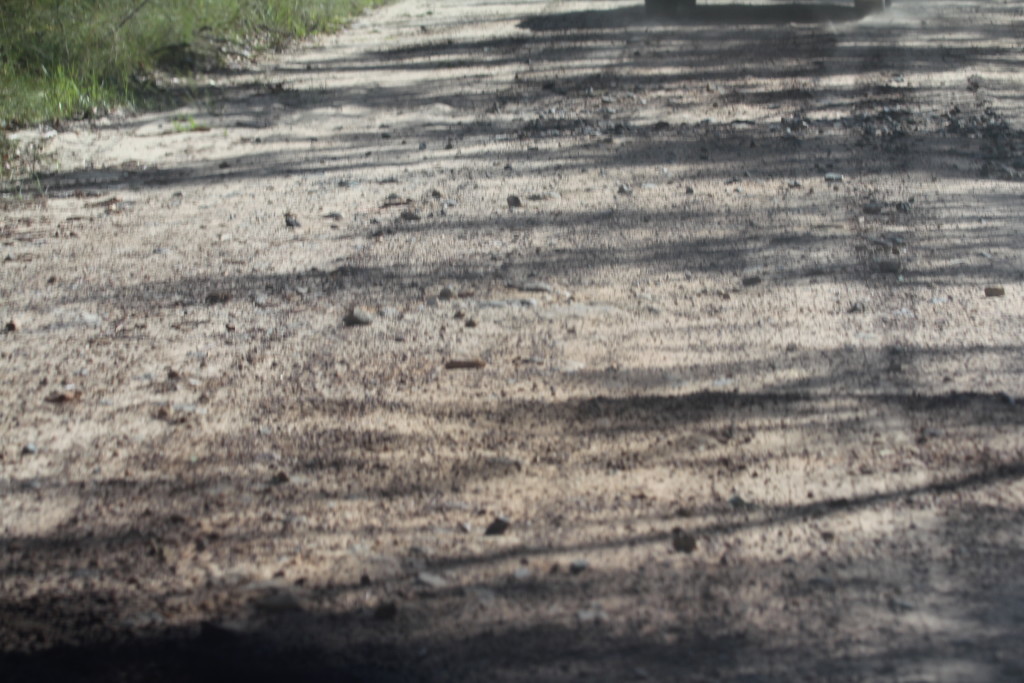
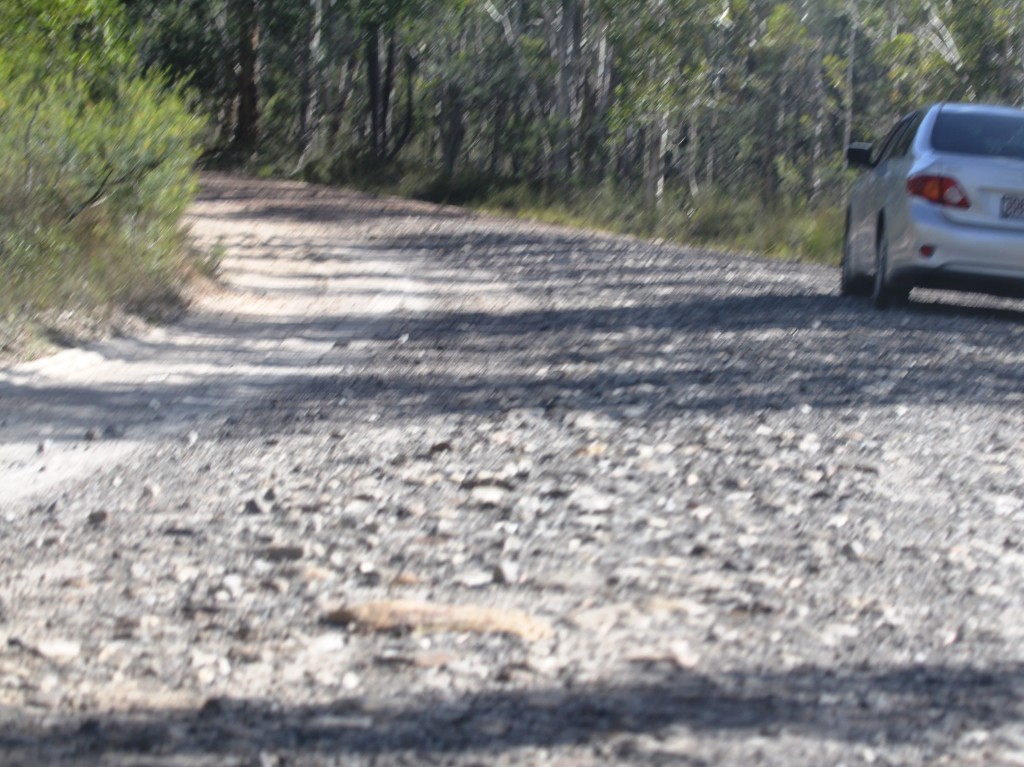
You drive for about 2.5 km, then turn left when you see this structure and go about another 2.5 km. The road gets even worse! Do NOT drive this road alone if you are not in a 4×4 as if anything goes wrong you would have to walk back to the Rainbow Beach Road to get decent cell phone signal.
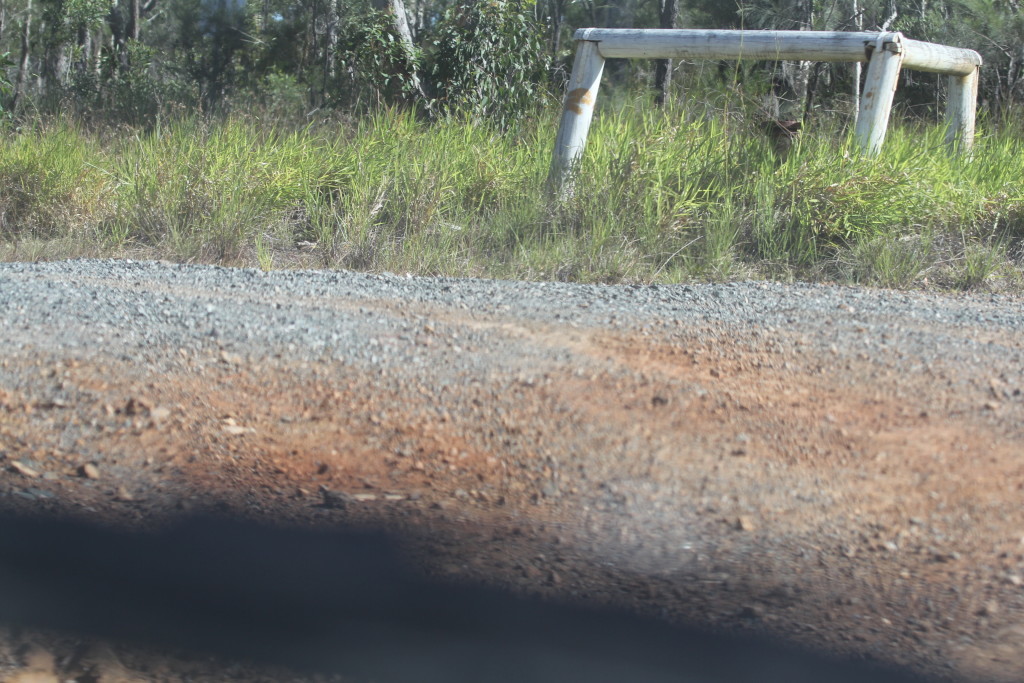
Eventually you come to heath grasslands like this. This is the prime habitat of the Ground Parrots. Walk along the main road or there’s a couple of side trails and you may flush one if you are lucky. The birds call to each other at dawn and dusk. I did hear them around 6pm (in December) but not as many as I had hoped. My recording on my iPhone didn’t work out so try these ones on Xeno-canto.
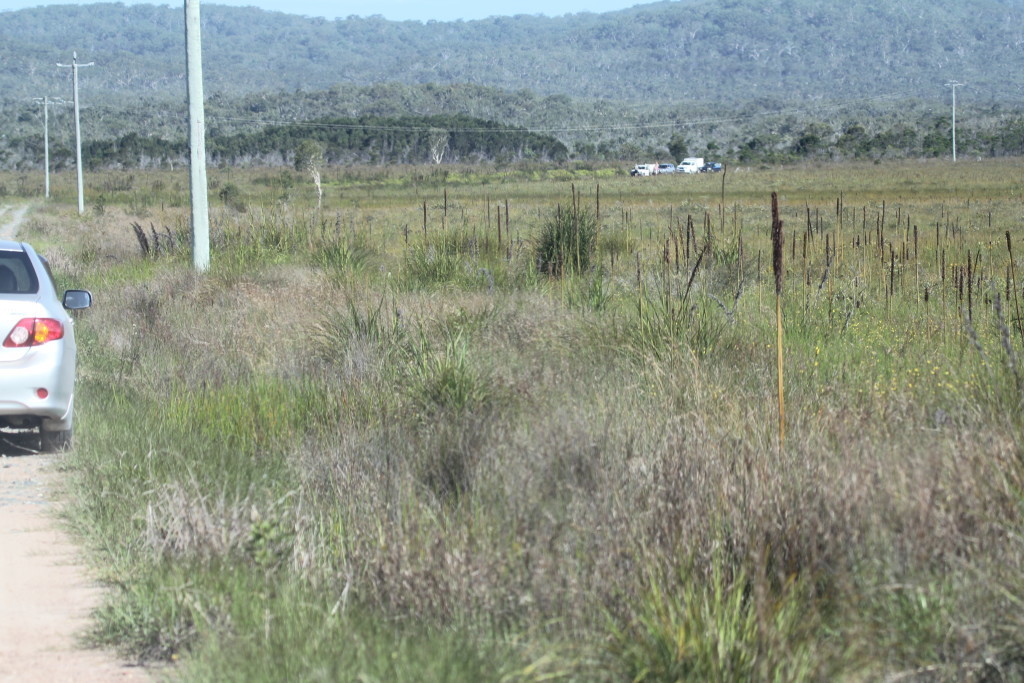
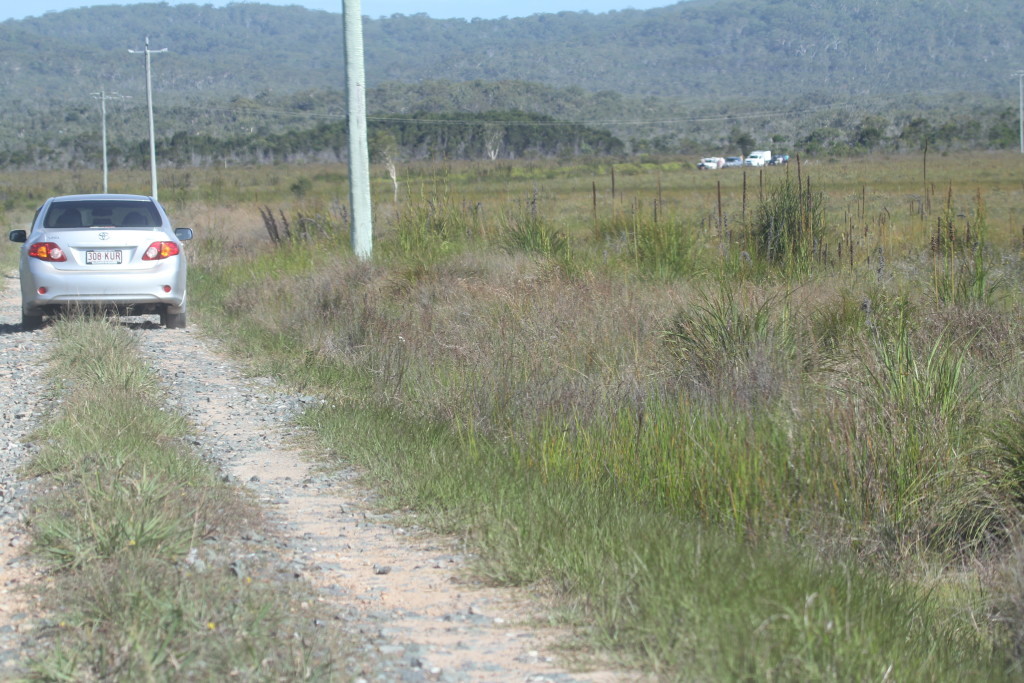
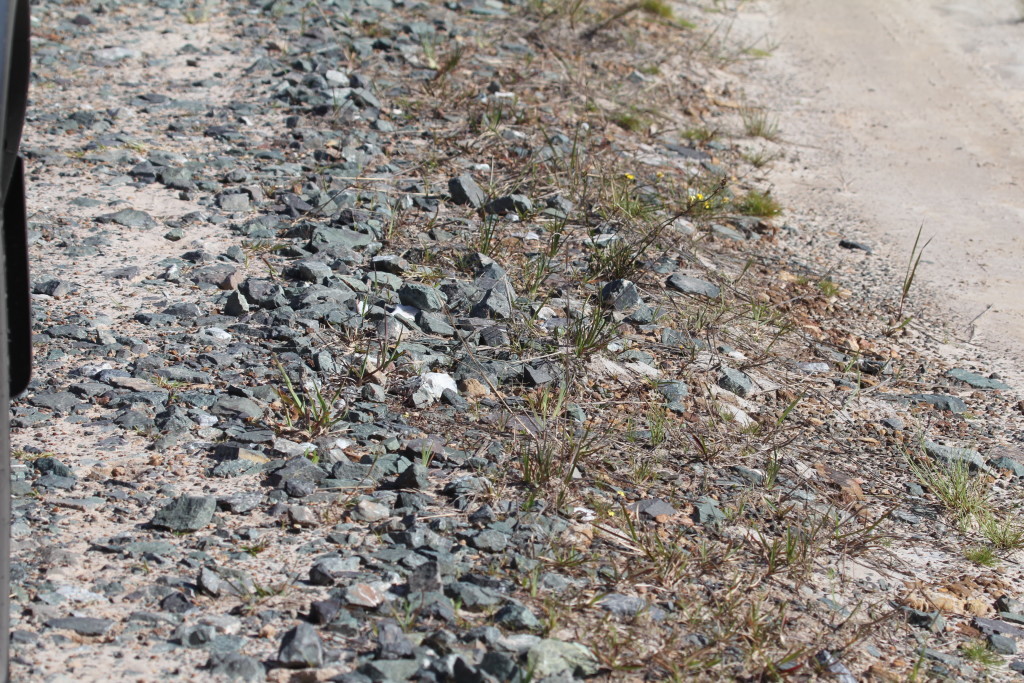

We got there way too early as it was summer with longer days. Fair warning: There are no toilets out here and no tall bushes to hide in. I postponed my hydration until we got back to the camp.
While we were waiting, this cute little baby Noisy Friarbird was waiting for his parents to come back an feed him. I was worried as he was left alone and would have had no defense against raptors. Thankfully the parents came back!
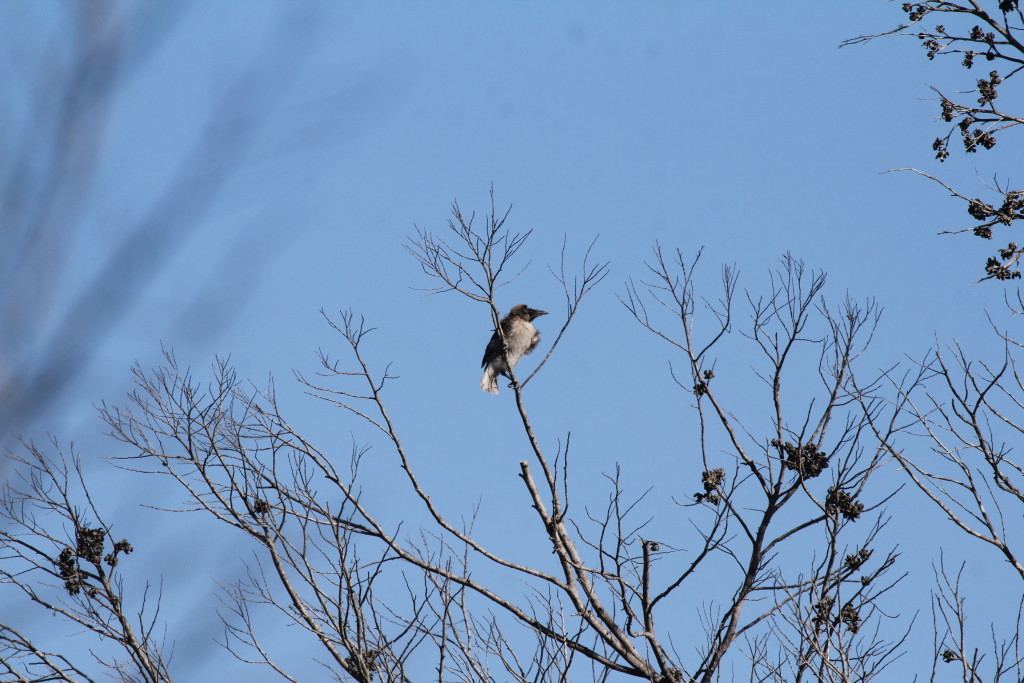
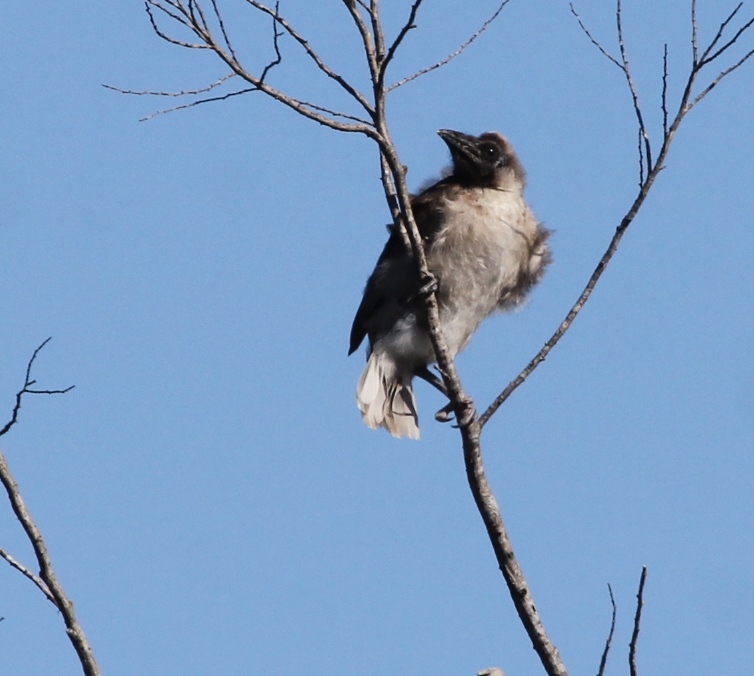
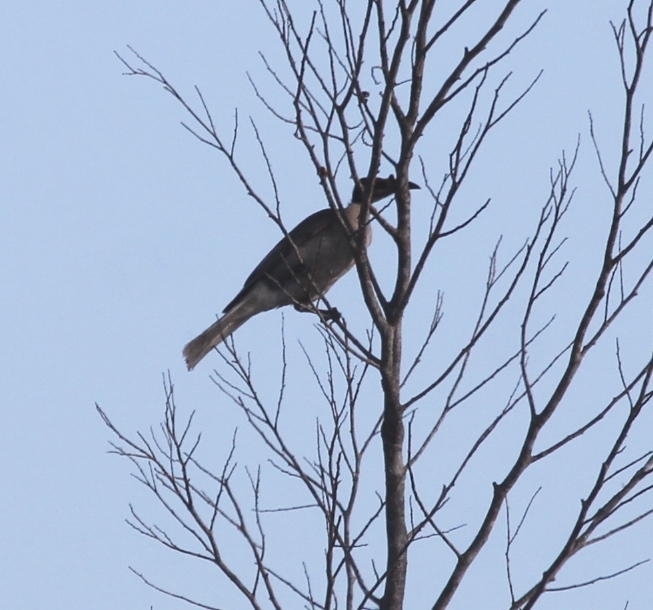
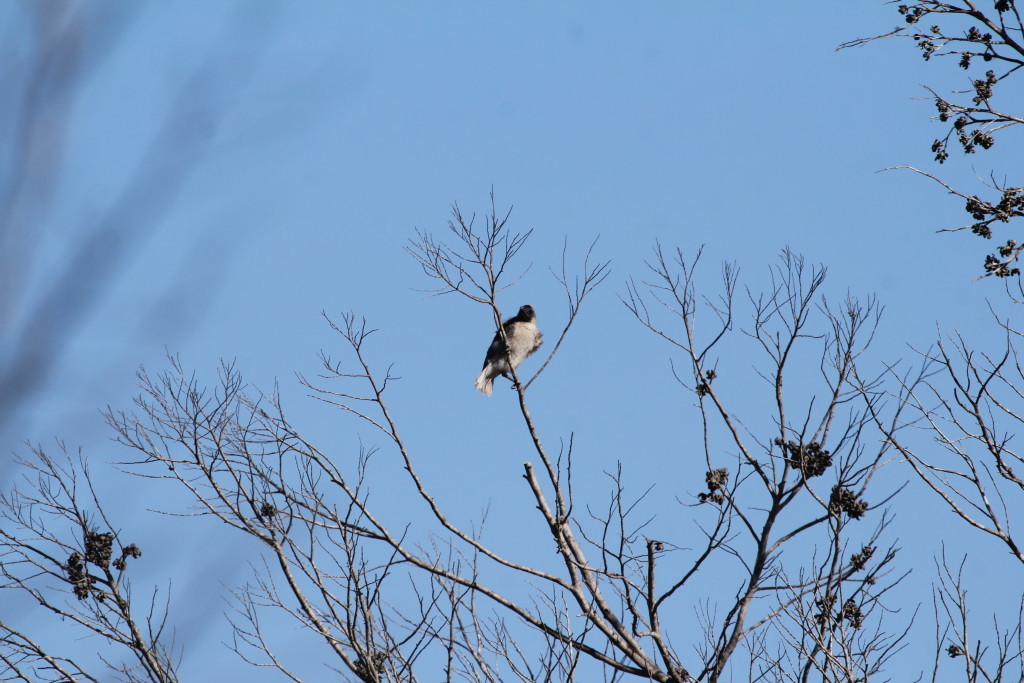
Way off in the distance, we could see a large flock of Yellow-tailed Black Cockatoos. I stretched my zoom to the max and jokingly asked the other birders, “Maybe if we ask them nicely, they will come closer”?
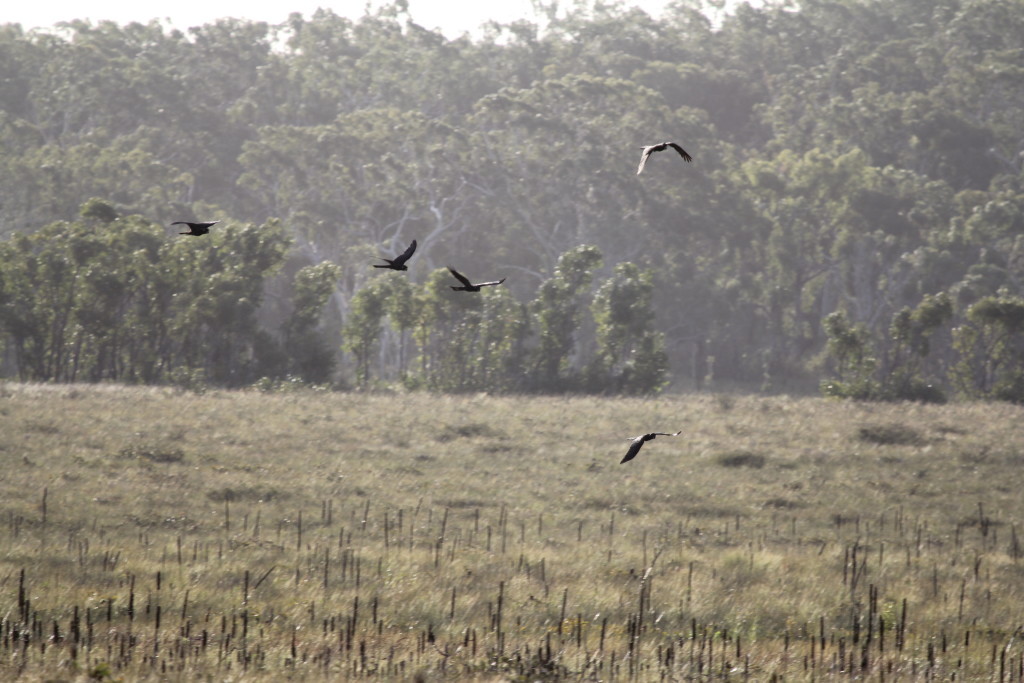
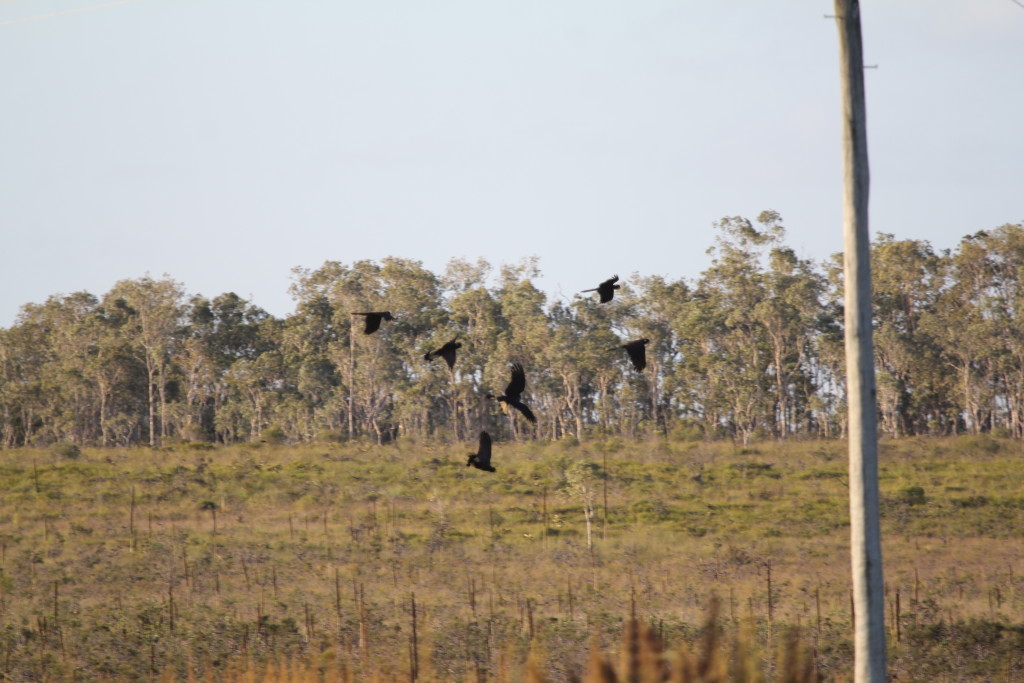
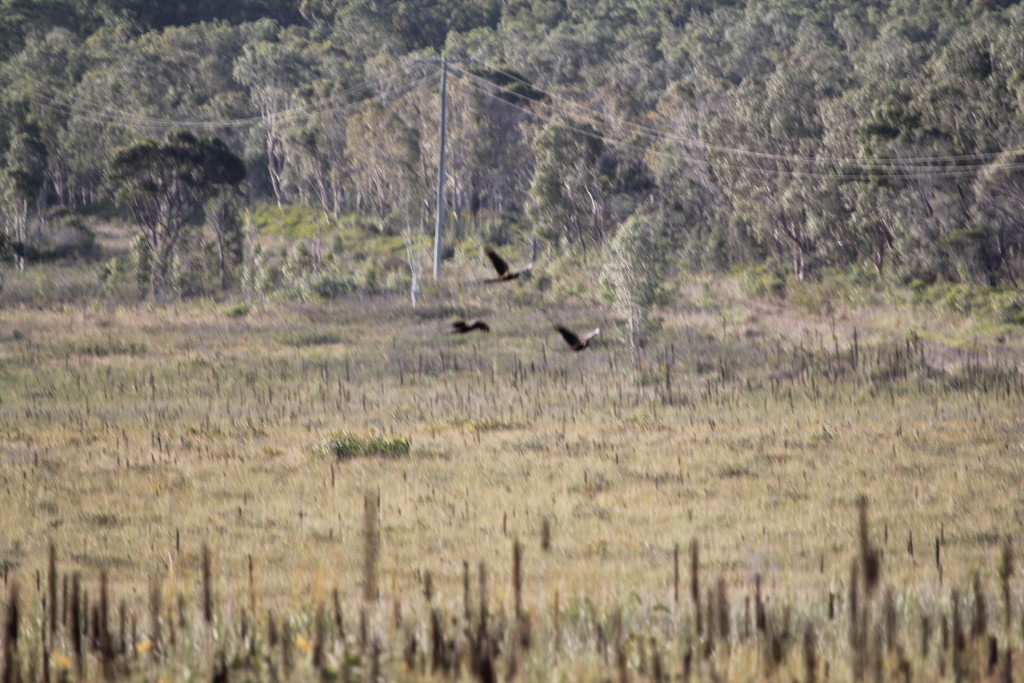

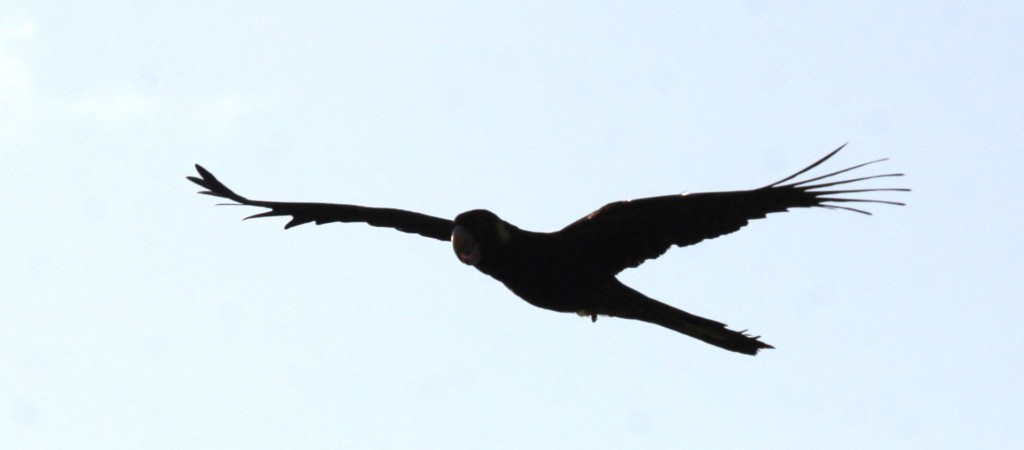
I think they heard us as 3 of them swooped directly overhead and were even kind enough to swoop on the other side so we could have the sun behind us!
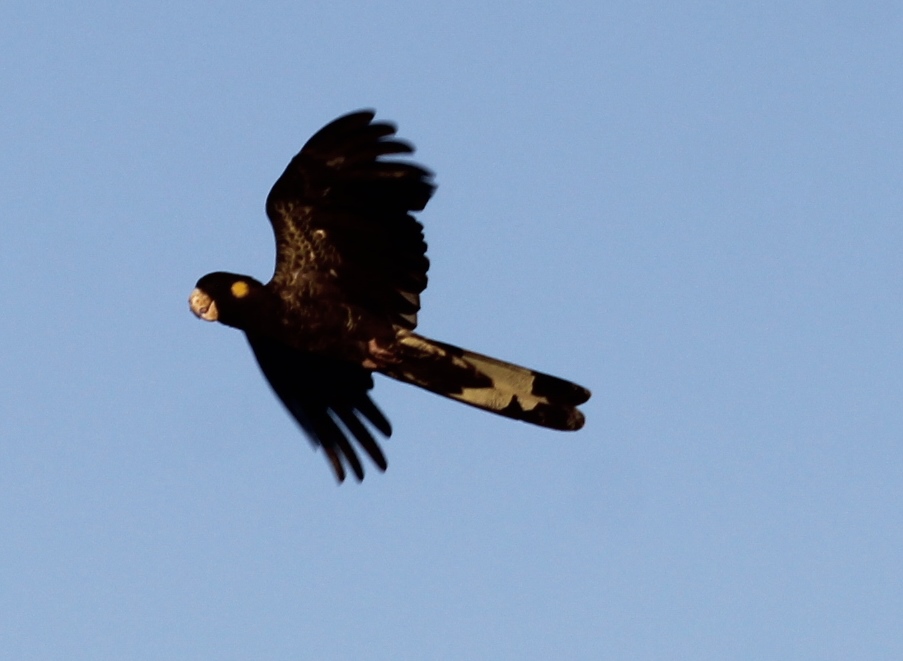

On the other side (away from the sun) was a smaller flock of Sulphur-crested Cockatoos. Not to be outdone by the Yellow-tails, one of them kindly flew overhead as well!
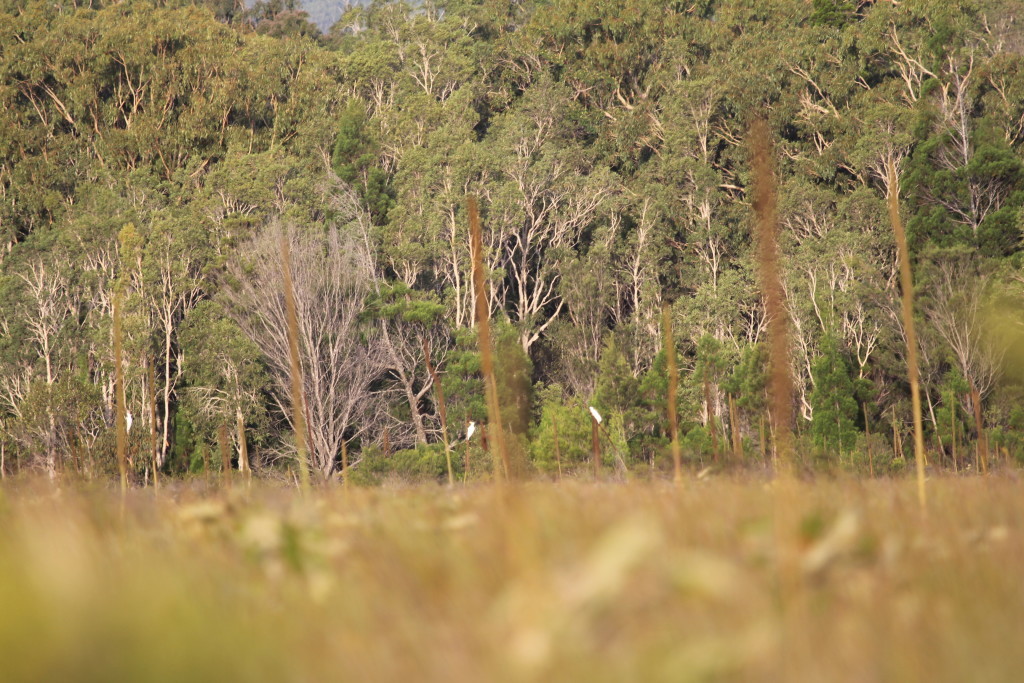
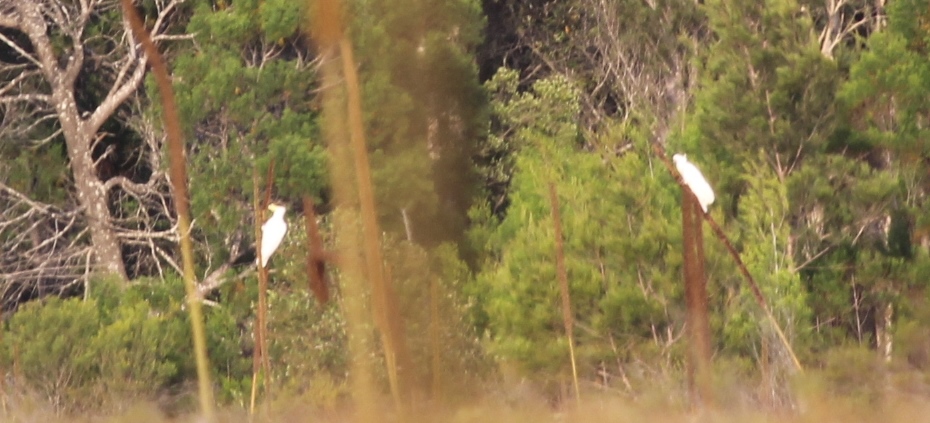
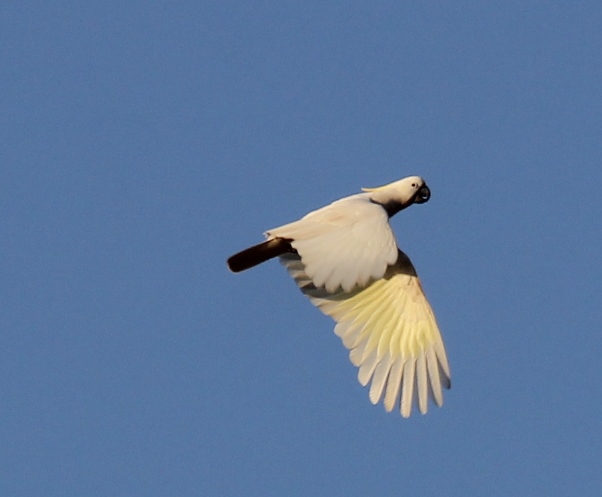 It made for an interesting but long day and I think if we ever go back on our own, we would do it in the shoulder season when the days are shorter – April, May, Sept, Oct. With a 4×4, you could make a full day starting at this location for dawn chorus, then drive to Tin Can Bay for shorebirds and breakfast, take a siesta, then come back here for the dusk chorus. Theoretically you could get back to Brisbane that same evening but you really need to spend the night before somewhere in the area to make the dawn chorus. Someday I will have a 4×4 so a return visit is defintely on my list!
It made for an interesting but long day and I think if we ever go back on our own, we would do it in the shoulder season when the days are shorter – April, May, Sept, Oct. With a 4×4, you could make a full day starting at this location for dawn chorus, then drive to Tin Can Bay for shorebirds and breakfast, take a siesta, then come back here for the dusk chorus. Theoretically you could get back to Brisbane that same evening but you really need to spend the night before somewhere in the area to make the dawn chorus. Someday I will have a 4×4 so a return visit is defintely on my list!
